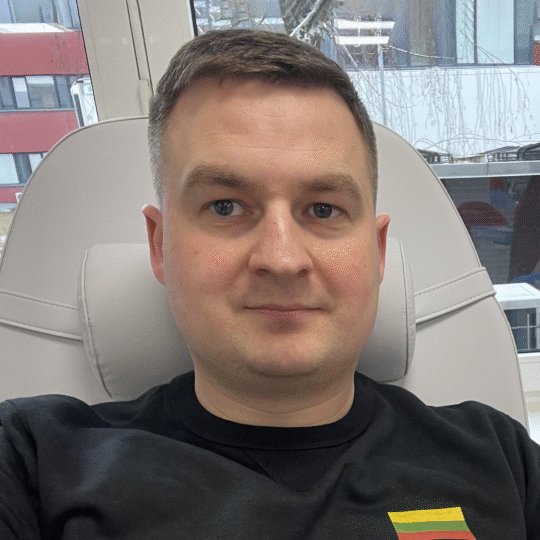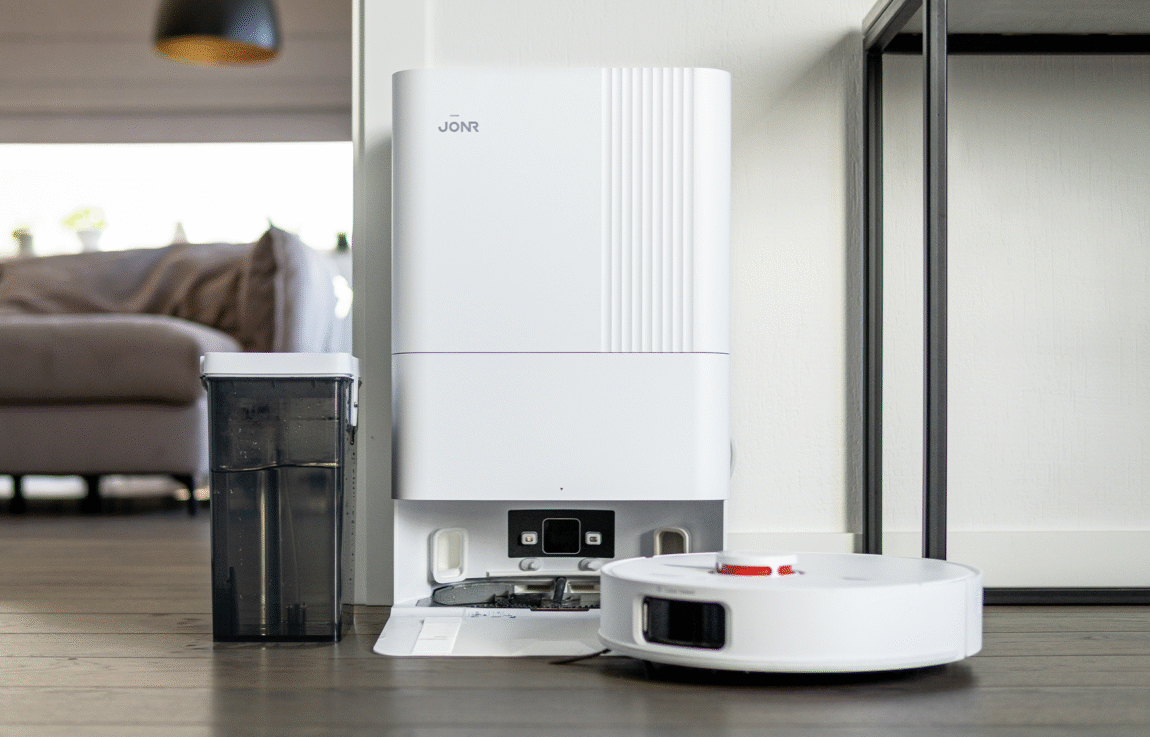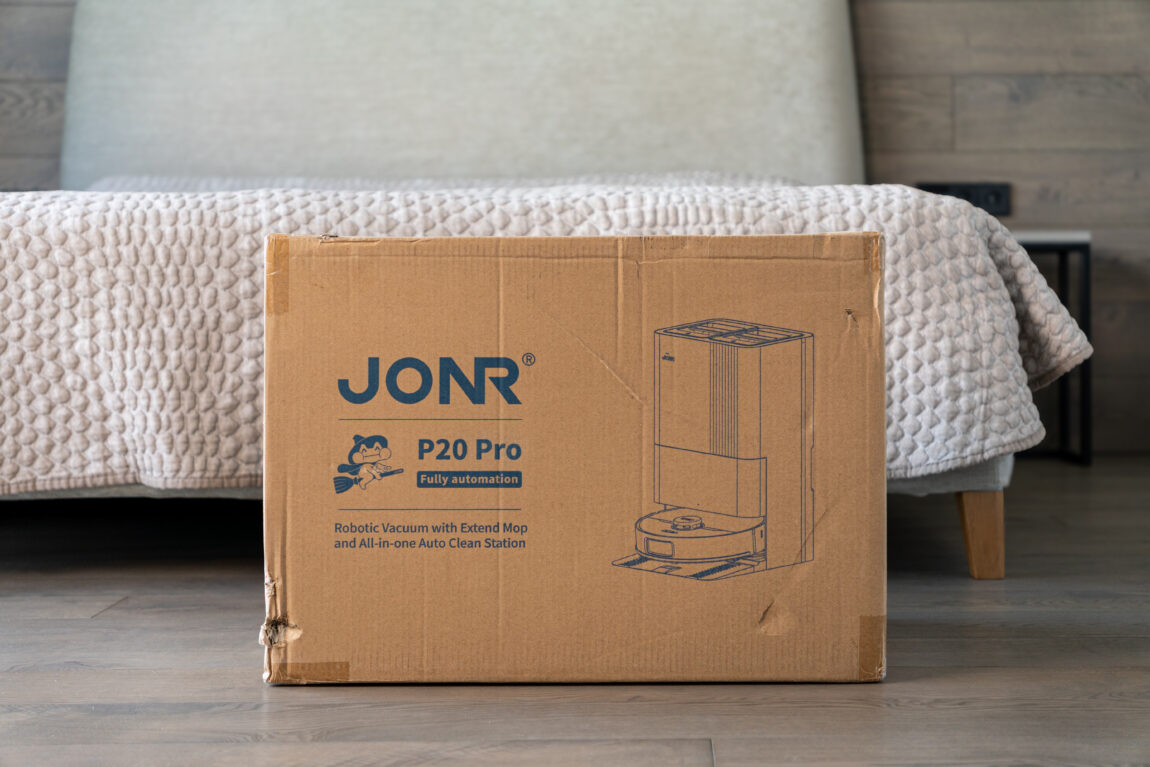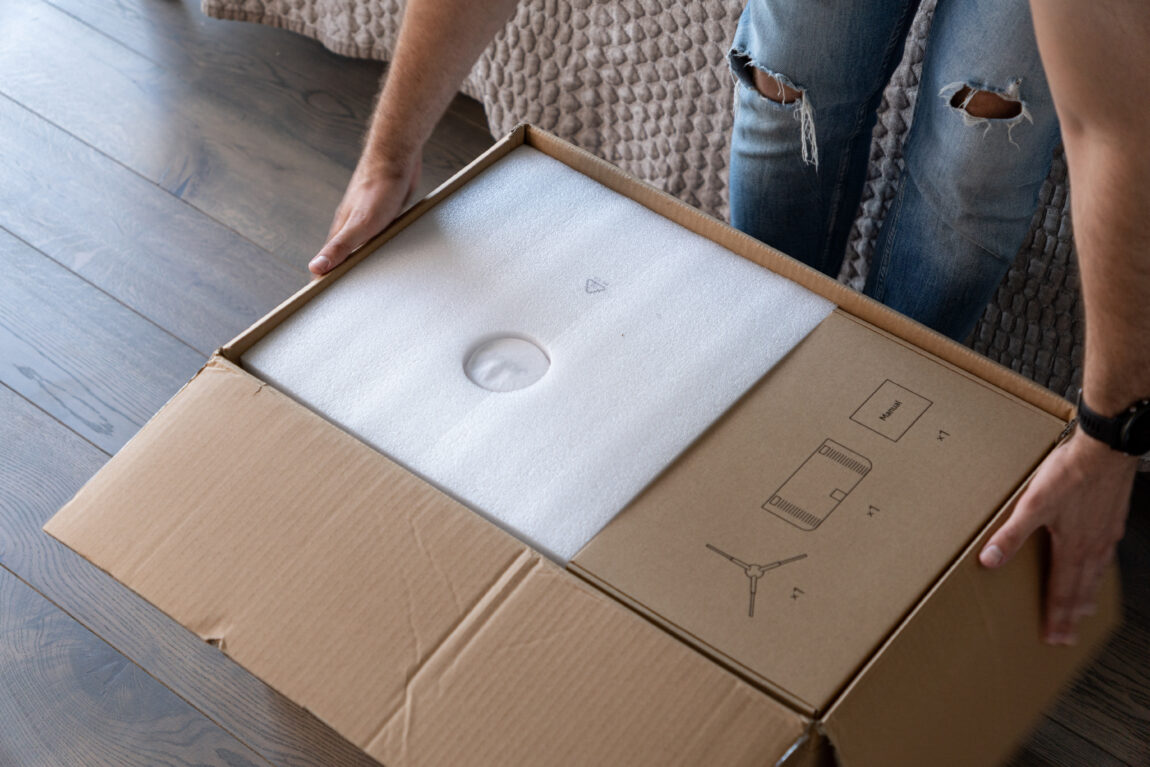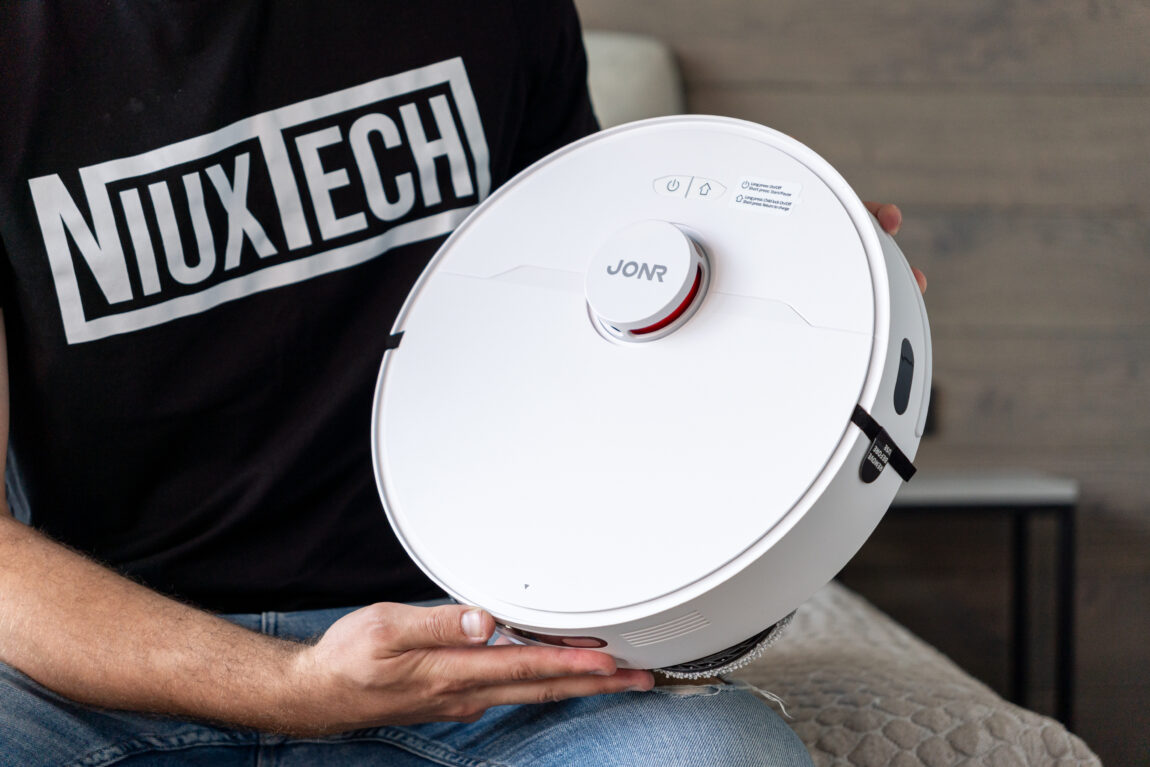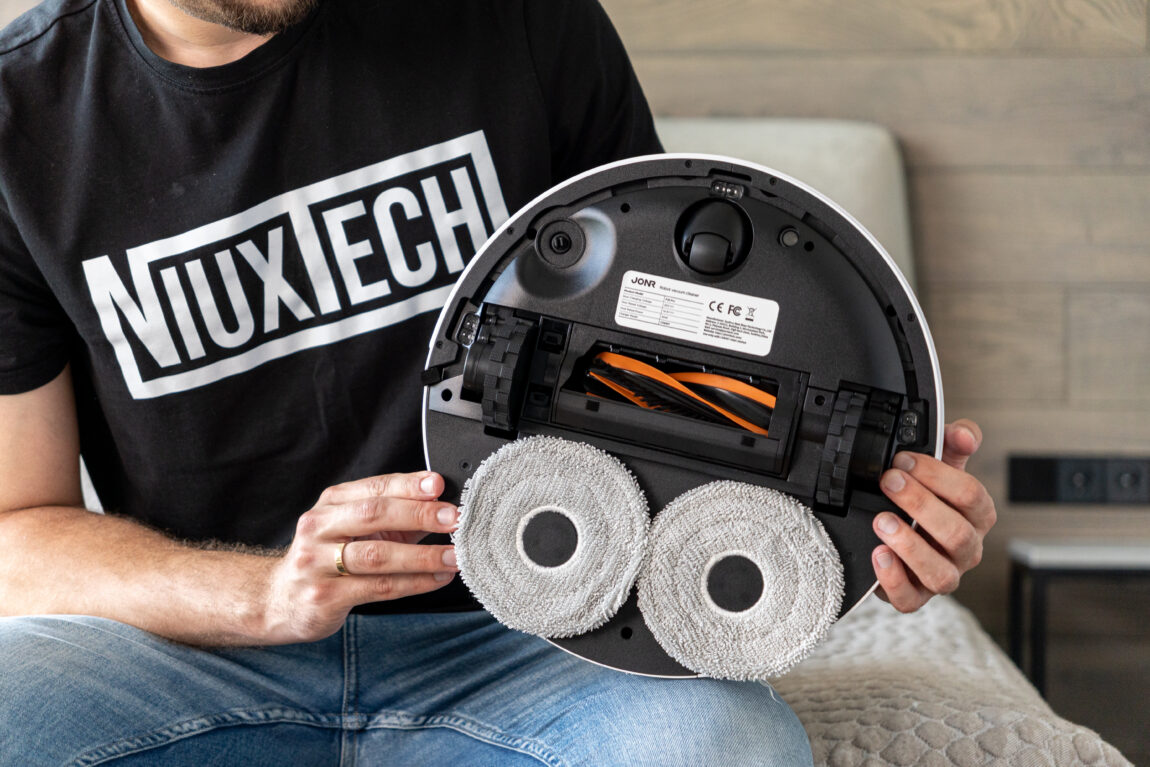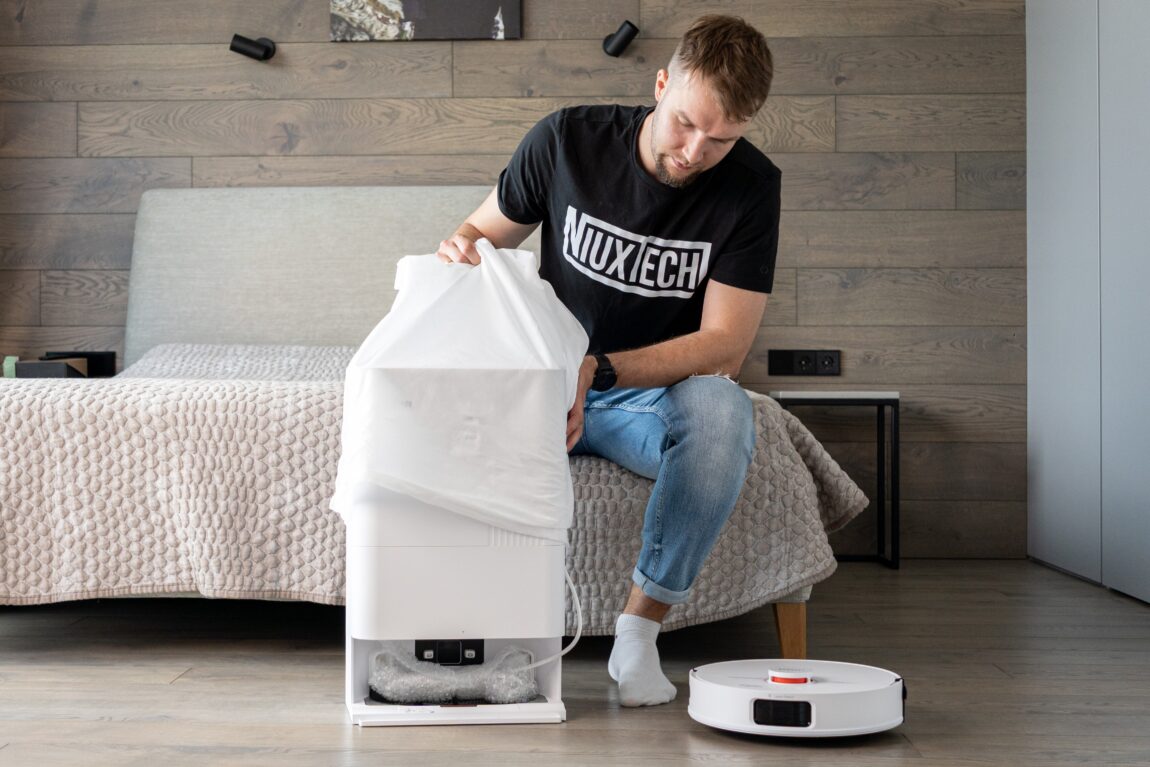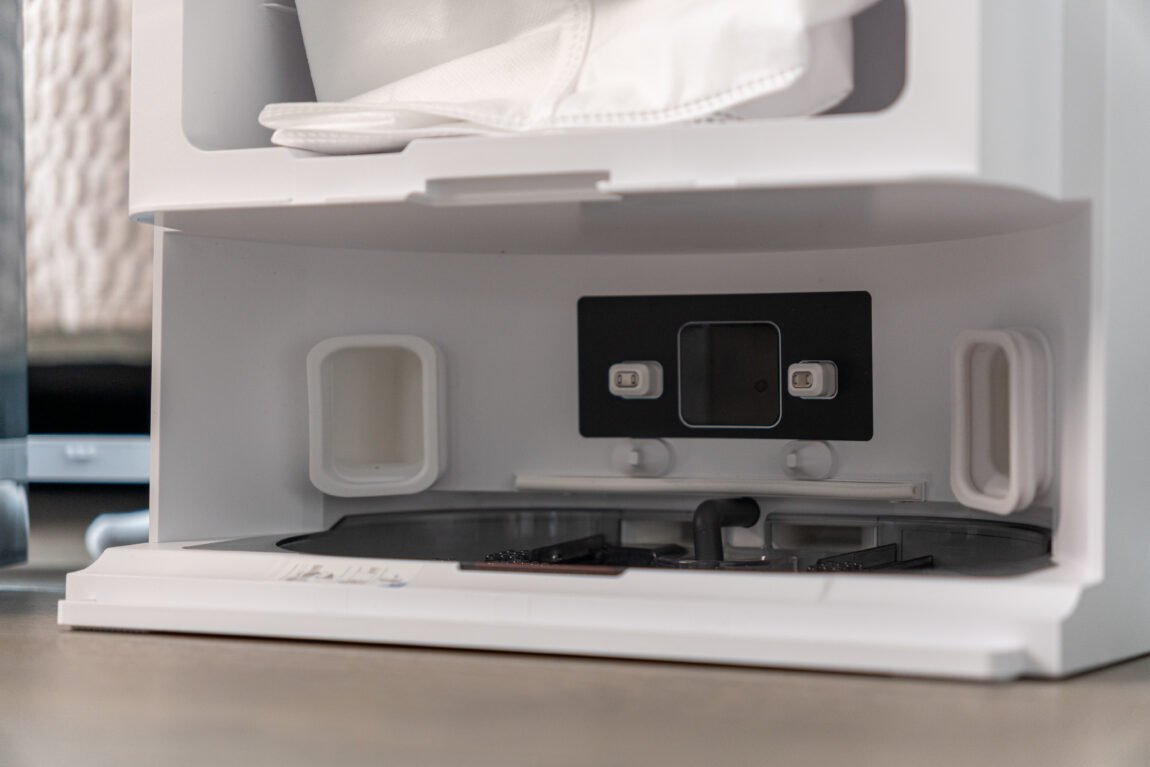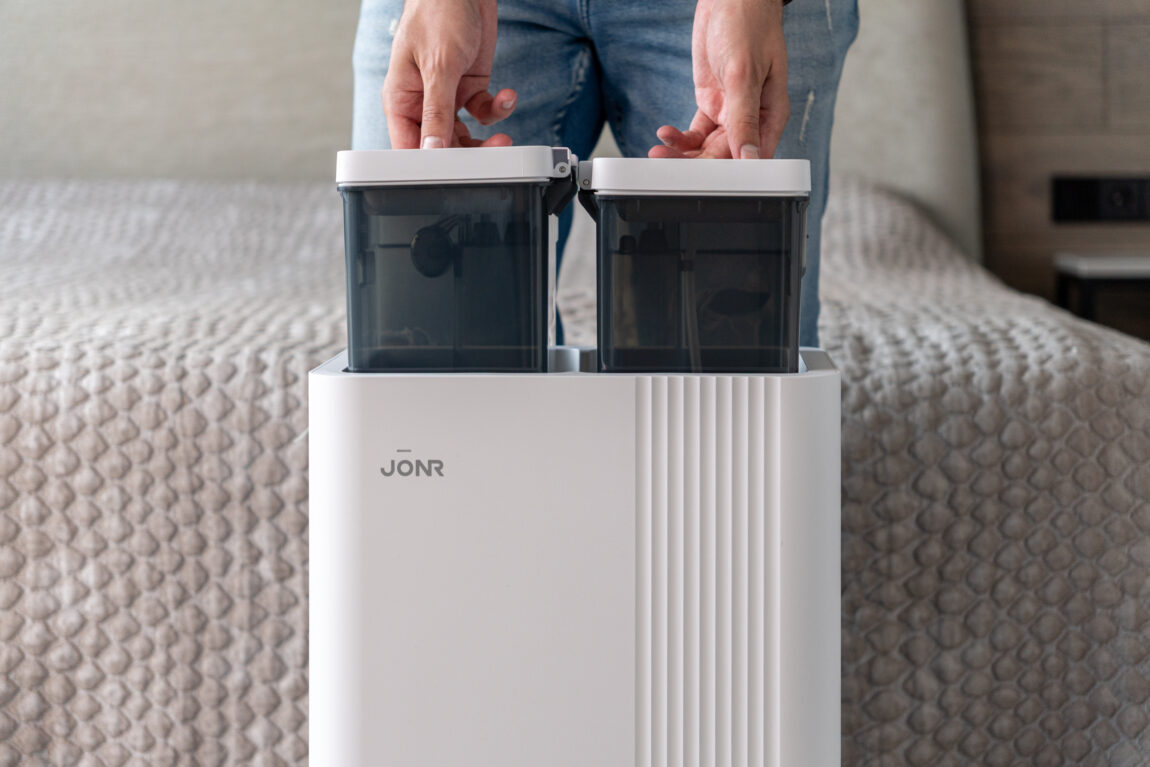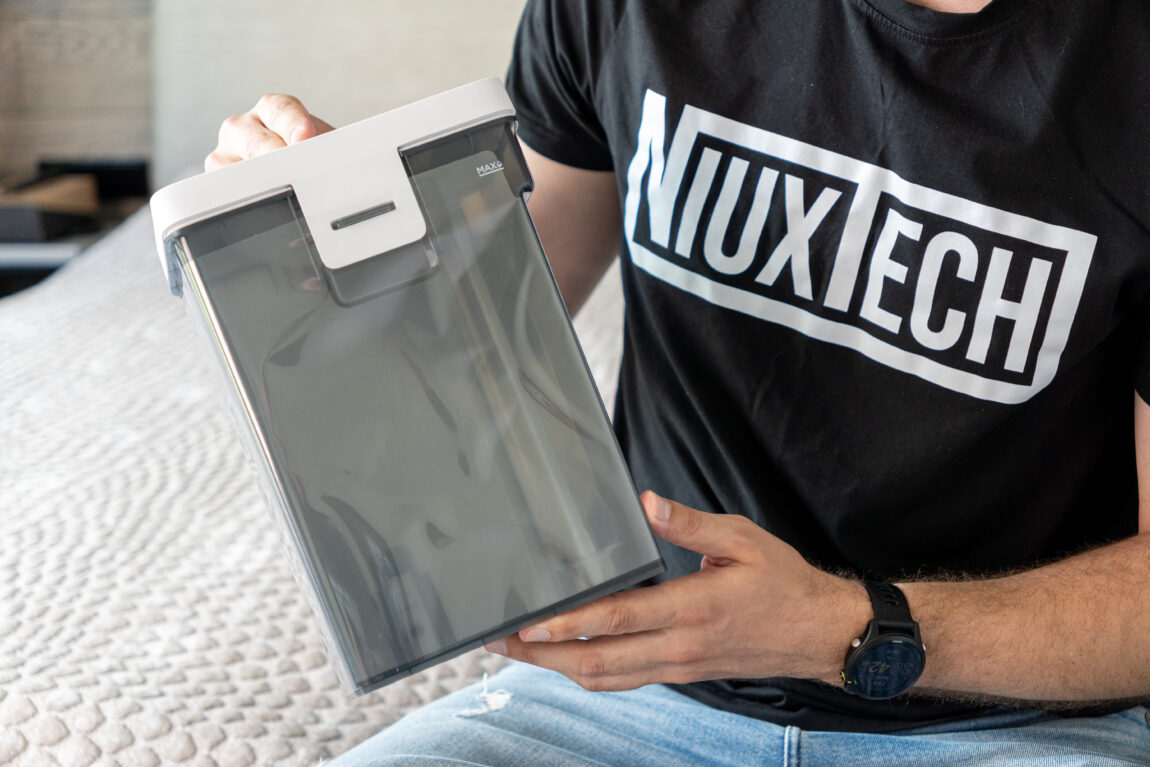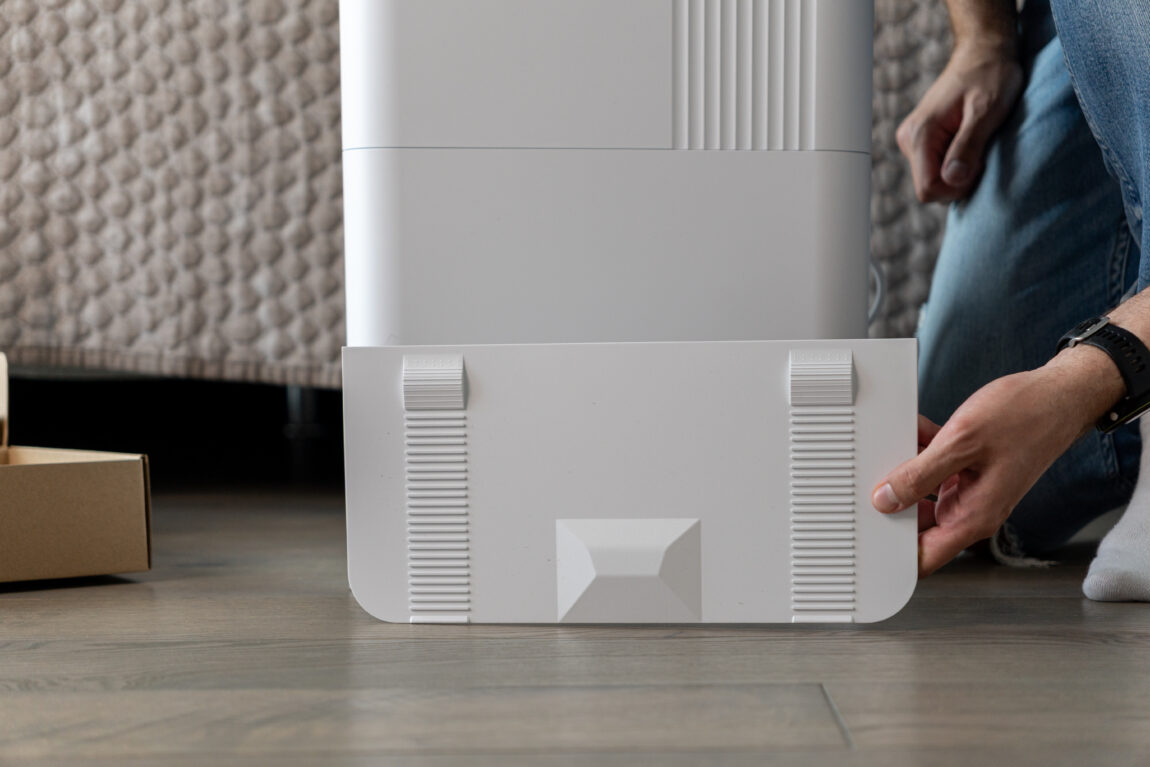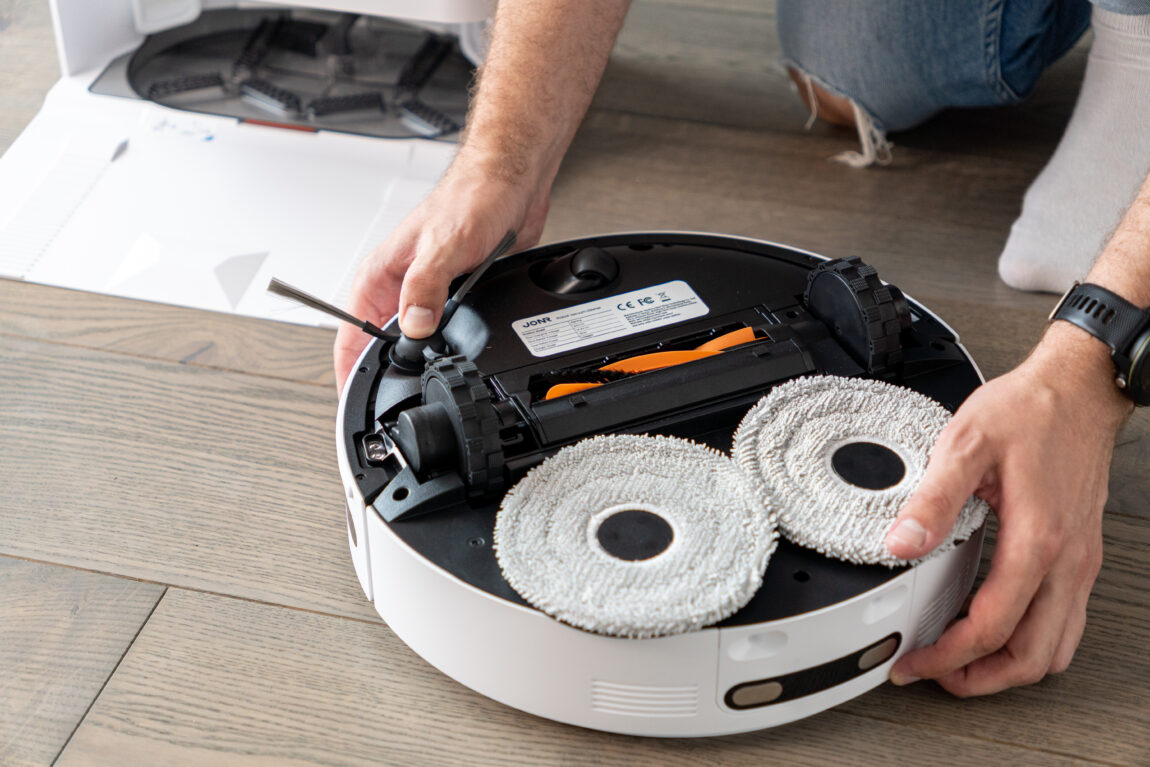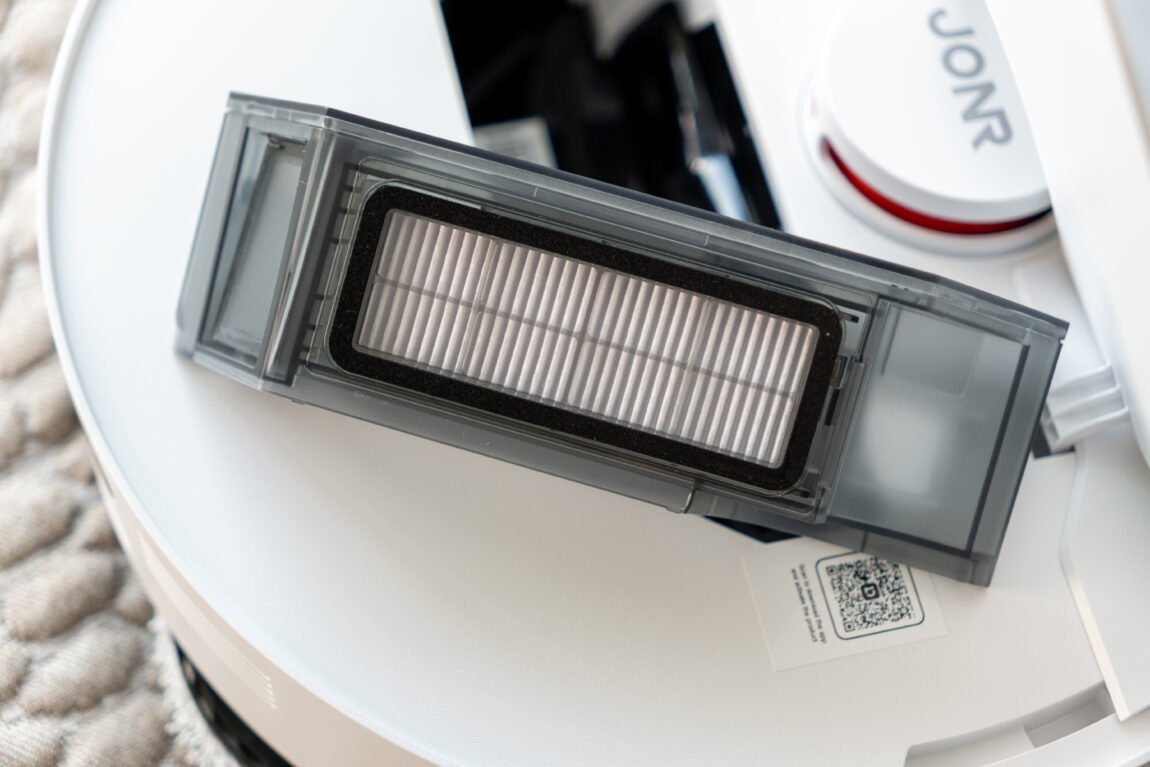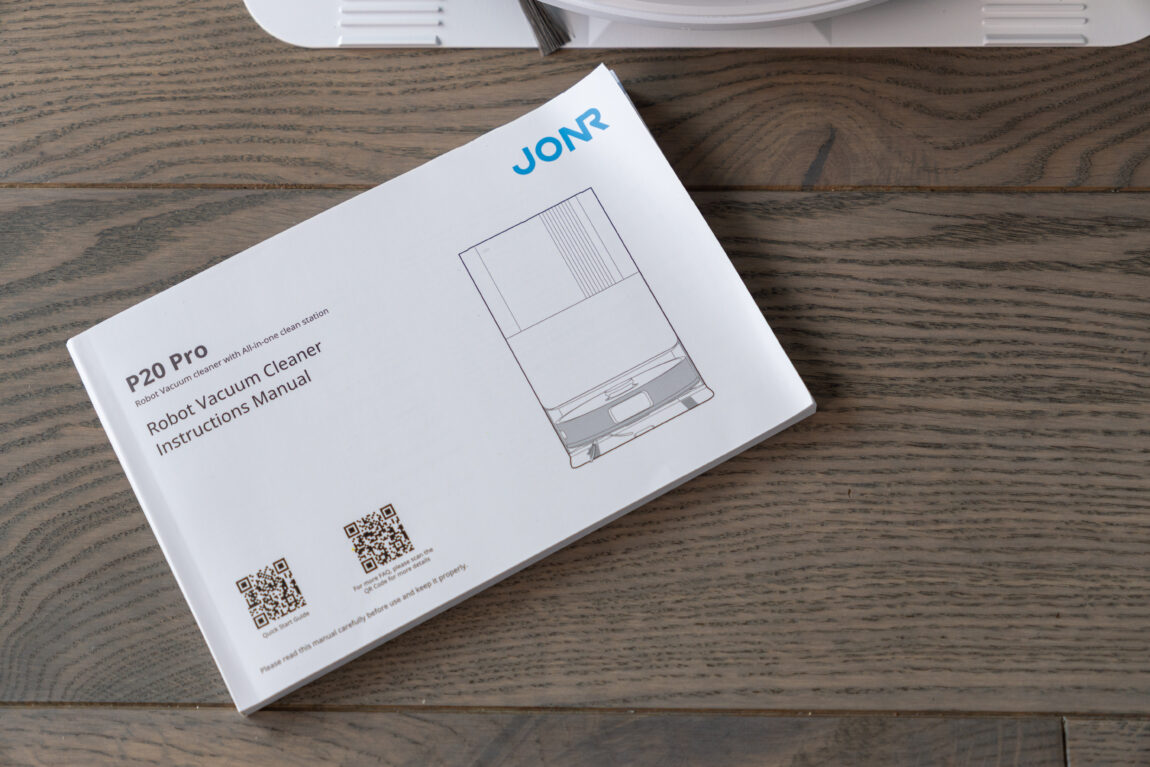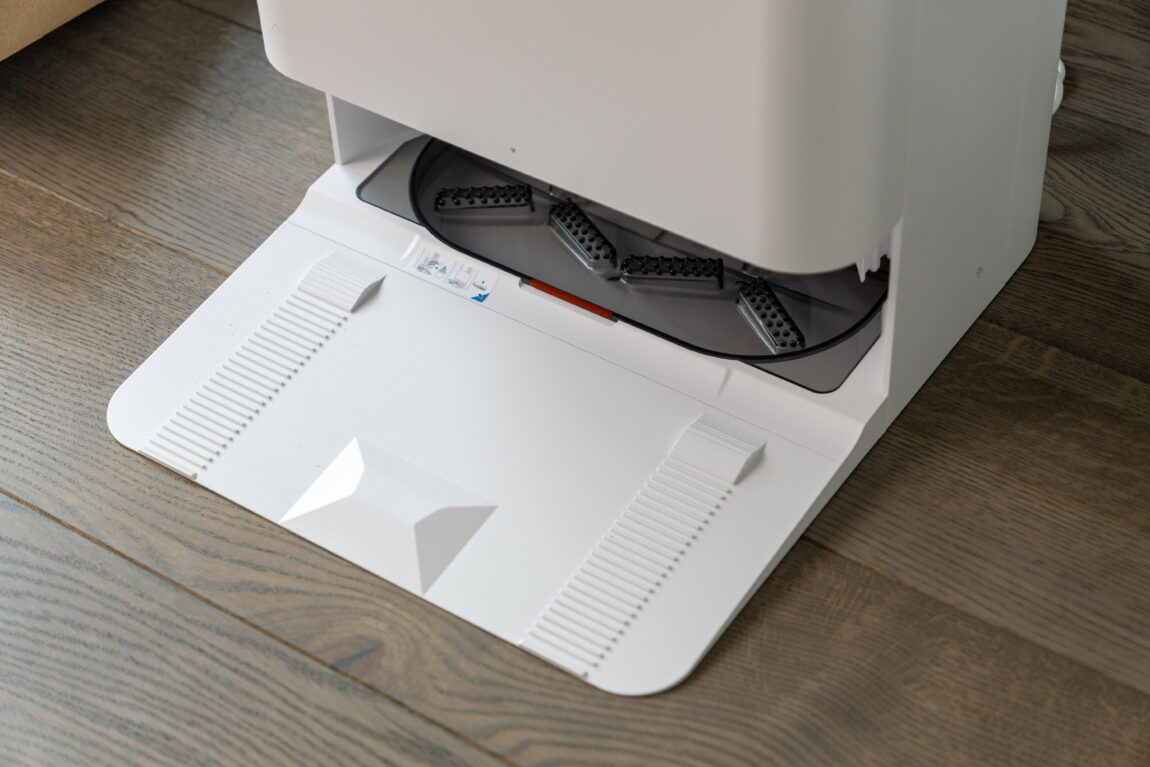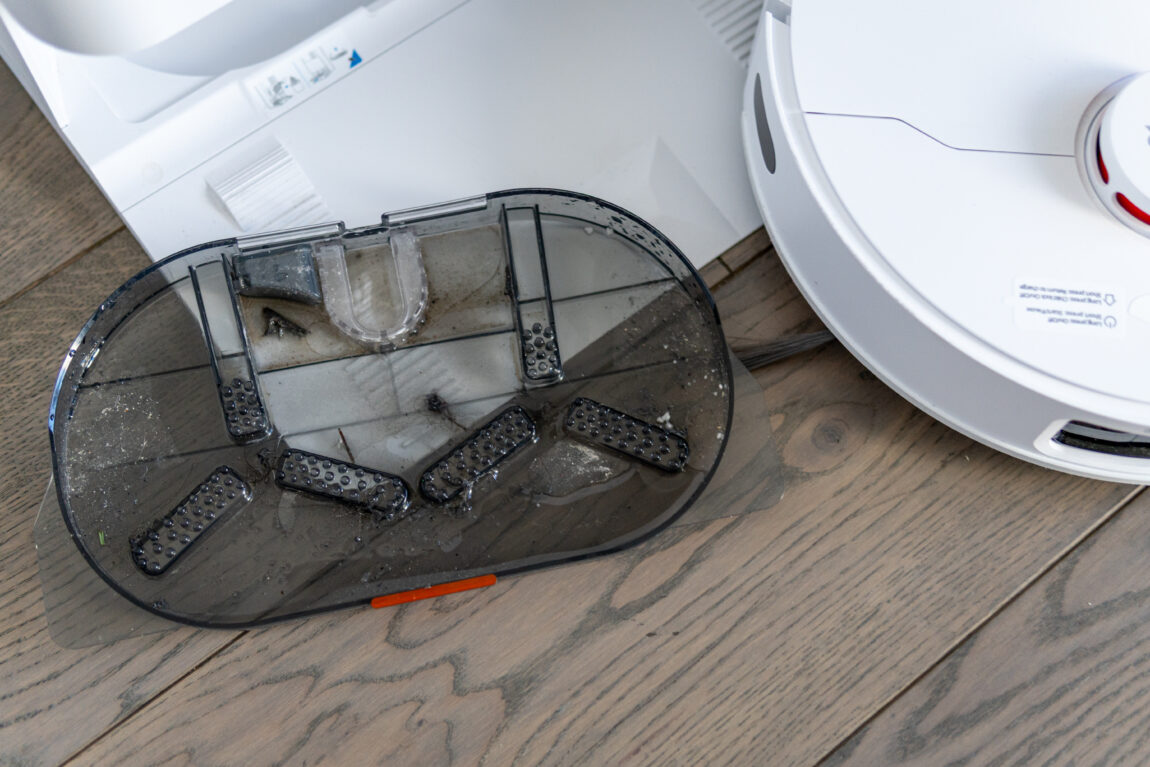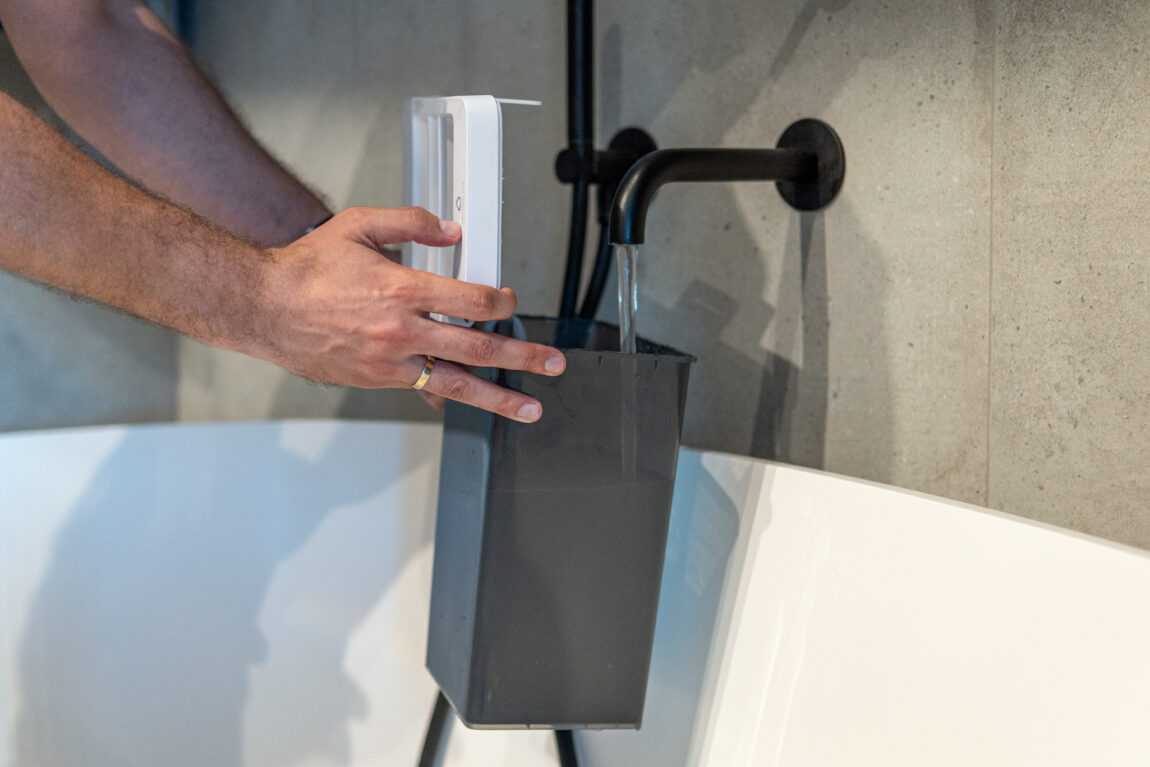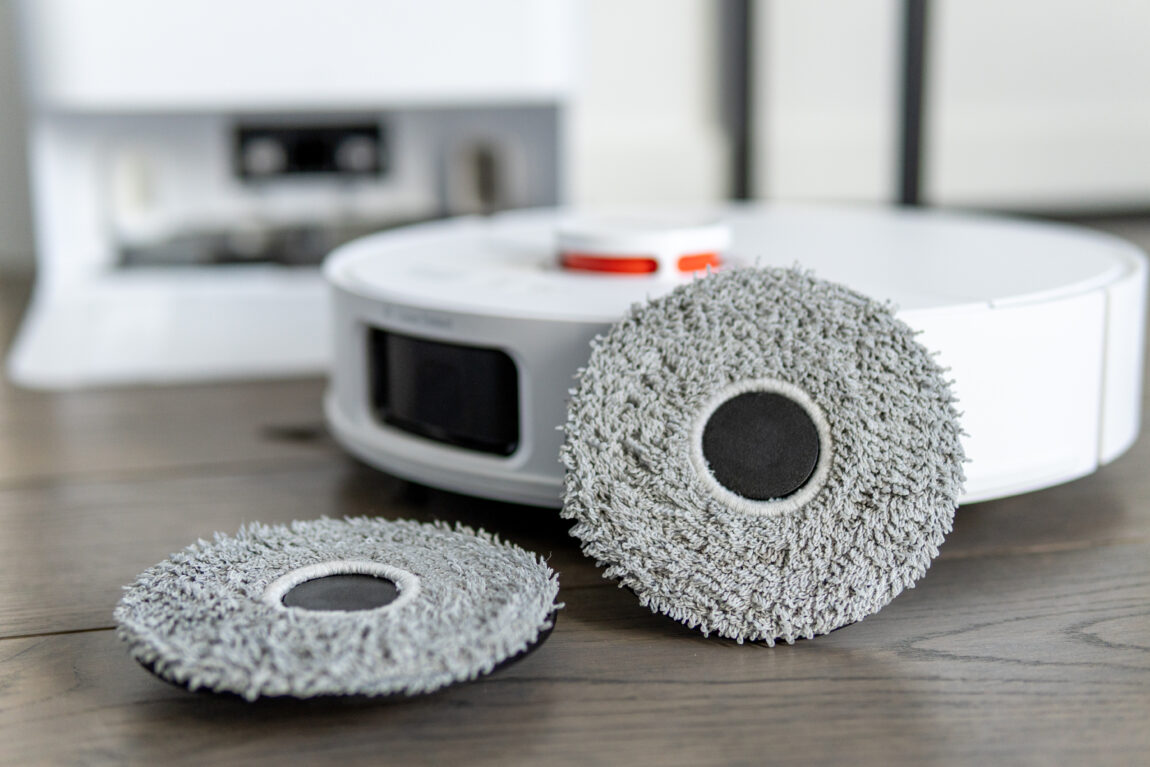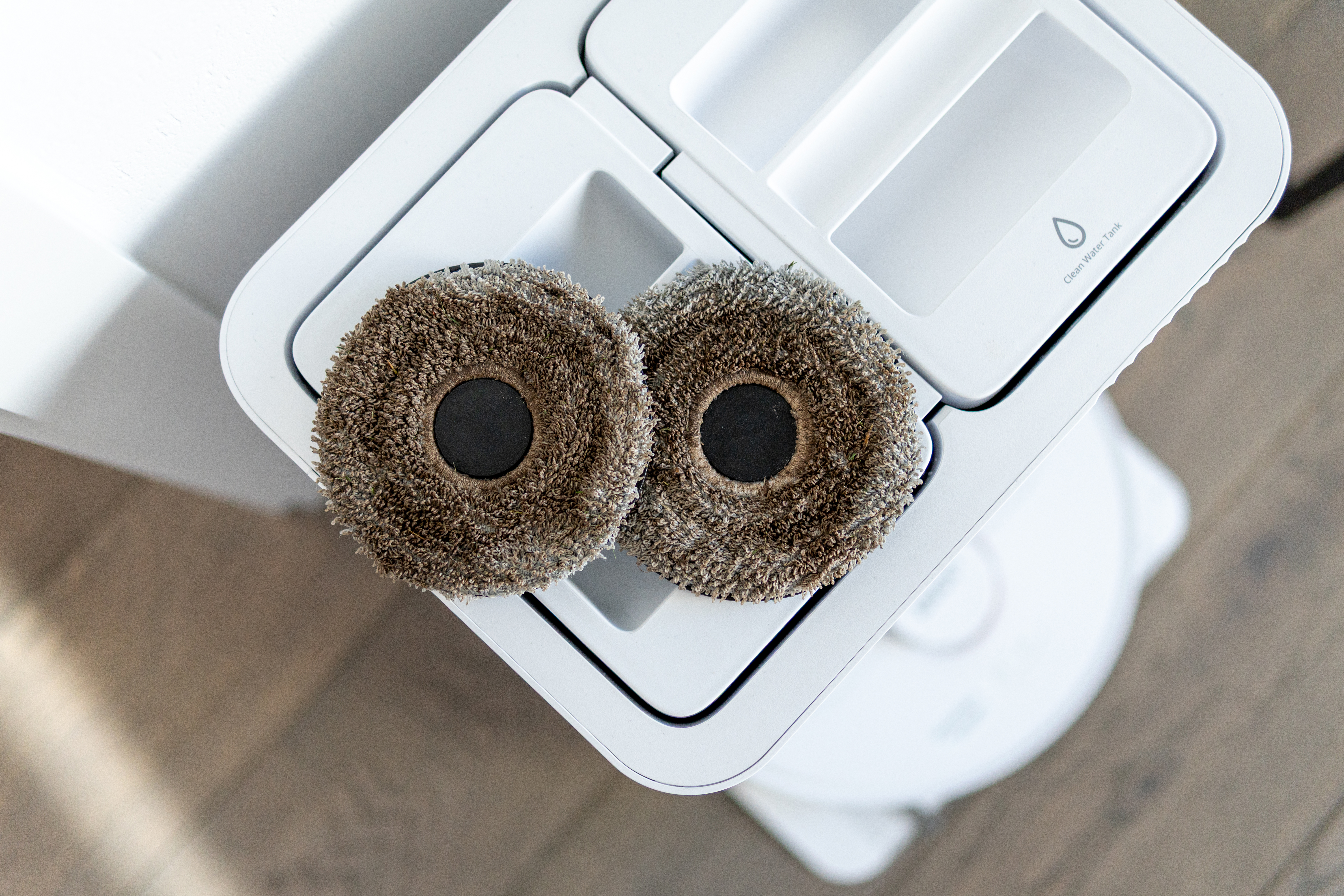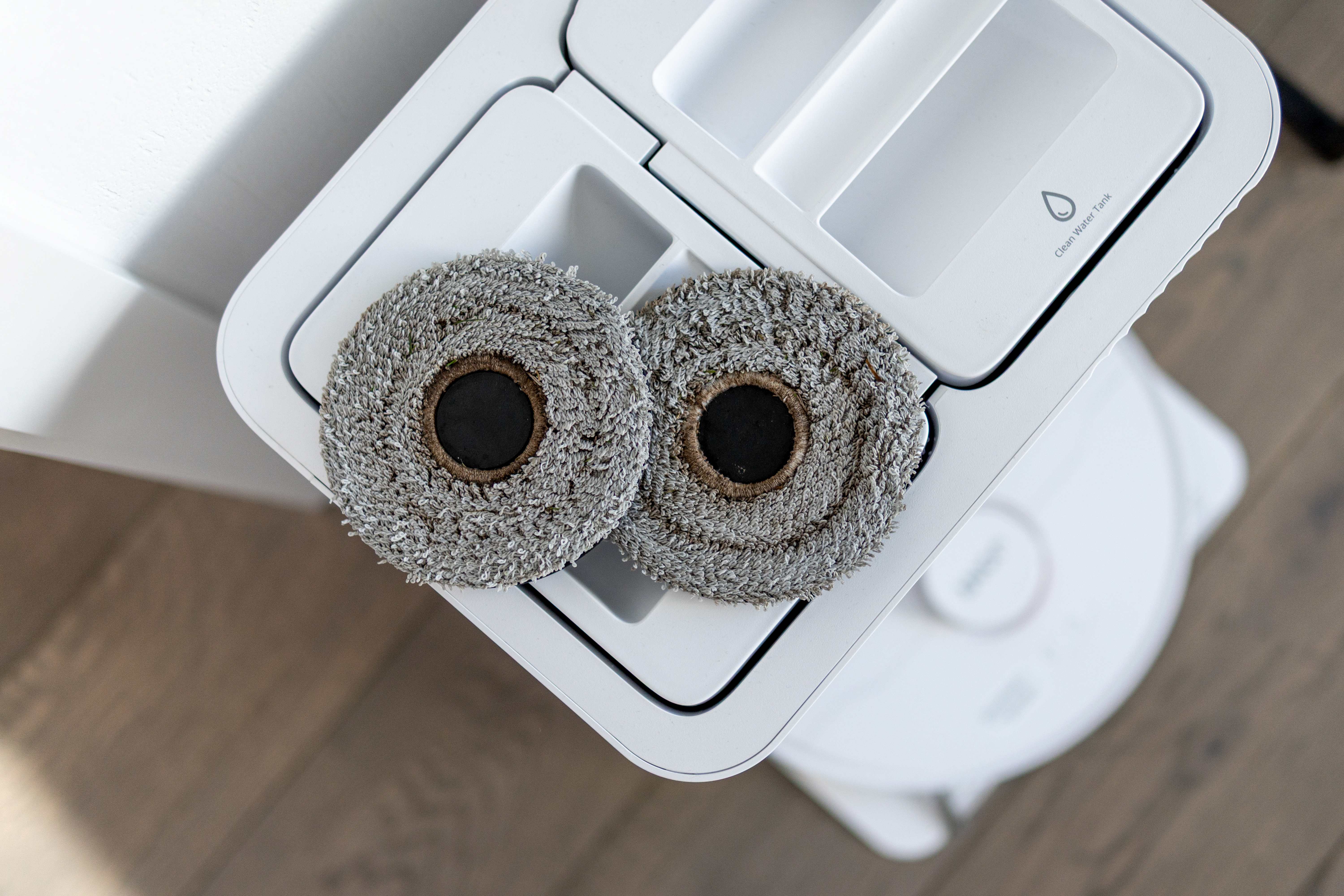Recently, the market for robot vacuums has been growing like wildfire, and manufacturers are trying to offer more and more advanced and autonomous devices. The Jonr P20 Pro is a new player that at first glance seems like an unrivaled budget-class option. Even 8000 Pa suction power, a wet cleaning function with a retractable mop, accurate LiDAR 360° home scanning and convenient control with the Xiaomi Home app.
JONAR P20 Pro
Assessment:
What did we like?
What didn't we like?
Nothing impressive, you say? It should be mentioned that this robot also has a station that not only charges the vacuum, but also extracts dust from it, washes the cloths, and then dries them. Still not convinced? Then hold on, because its price during the promotional period is less than €250.
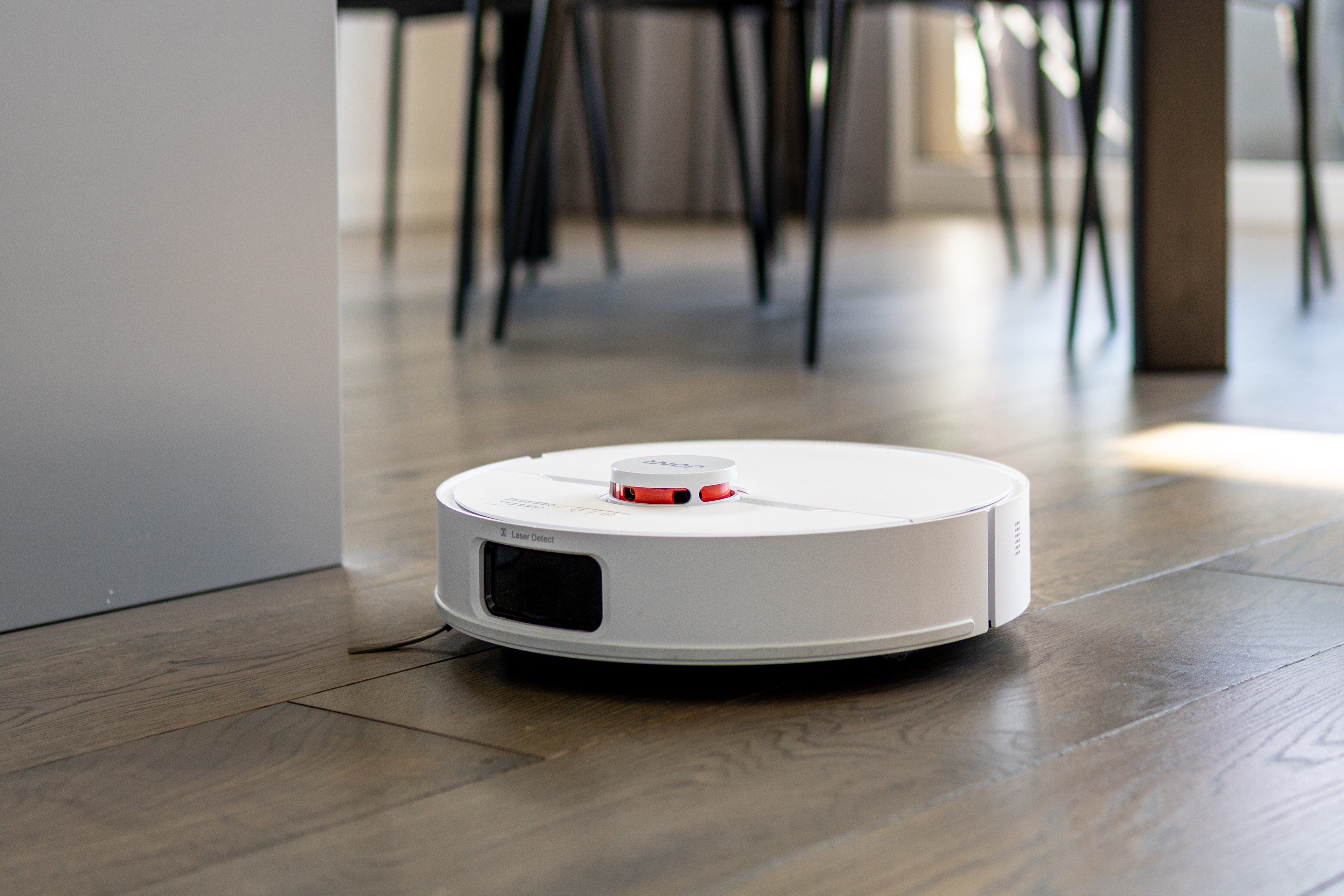
Sounds too good to be true… So where's the catch? We've been testing this model for two months, and now it's time to reveal the whole truth and find out together with you whether we can title the Jonr P20 Pro as the best budget robot vacuum of 2025?!
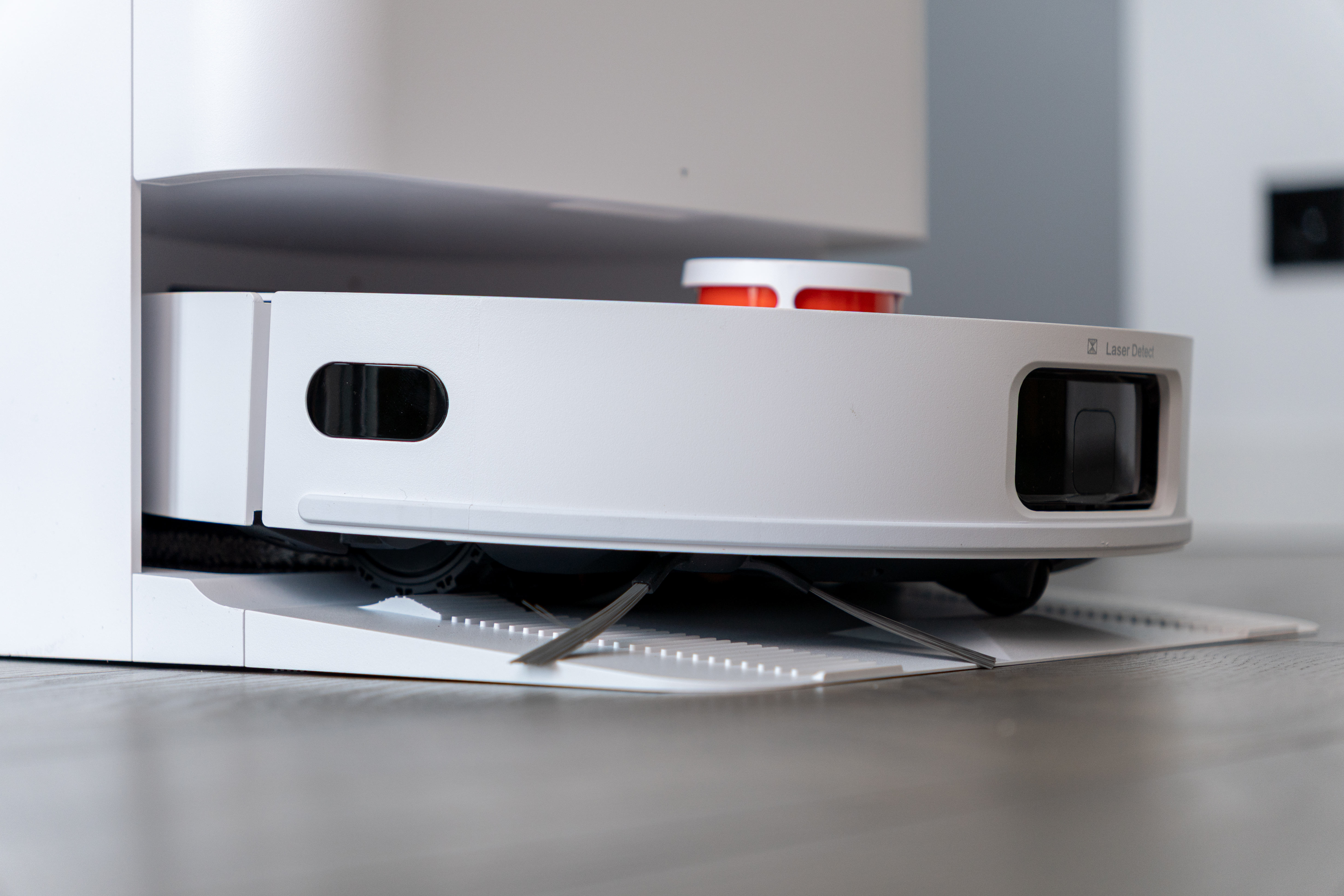
Design and first impressions
As soon as you unpack the Jonr P20 Pro from the box, you get the impression of a solid and high-quality product. Nothing rattles, the plastic looks durable, all the parts hold firmly, and the robot itself is perfectly assembled. The robot resembles the Roborock design line: the LiDAR turret on the top, the white body, and the minimalist design give the impression of luxury.

Connecting the station took just a minute – everything is simple and clear, you didn’t even need instructions. The station is not bulky, it looks stylish and fits into the interior. Its dimensions: 560 x 340 x 400 mm. Together with the package you will receive two washing cloths, a side brush and a main suction brush - a roller. Spare parts will not be included, but you can buy them inexpensively in the Aliexpress store.
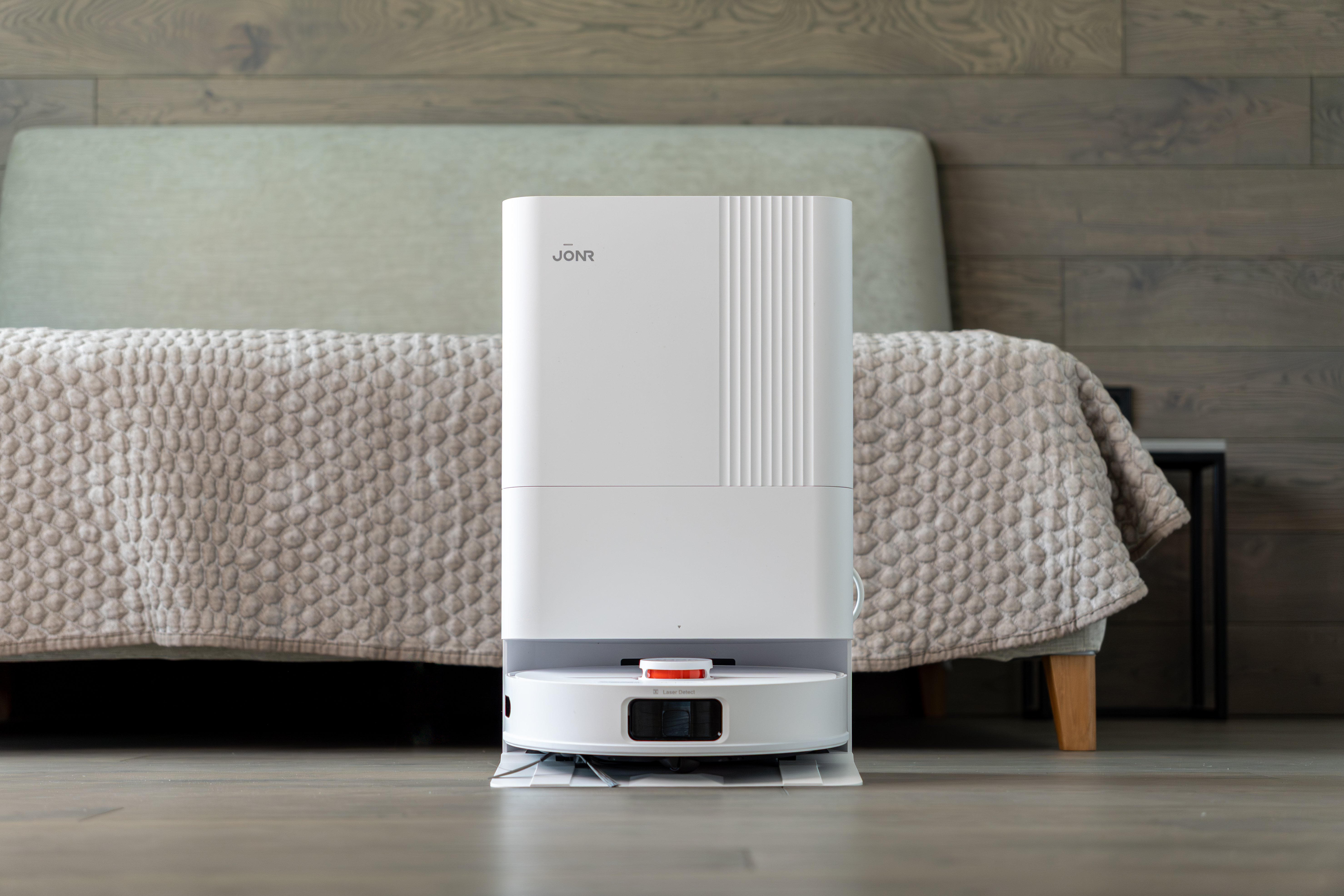
Smartness and the Xiaomi Home app
The Jonr P20 Pro integrates with the widely used Xiaomi Home app, which is a big advantage for those who already have Xiaomi devices. The robot is connected to the app very easily - you just need to connect it to your phone via the (robot's) Wi-Fi connection, and then to your home network. Although only 2.4GHz Wi-Fi is officially supported, during testing everything worked fine with 5GHz.
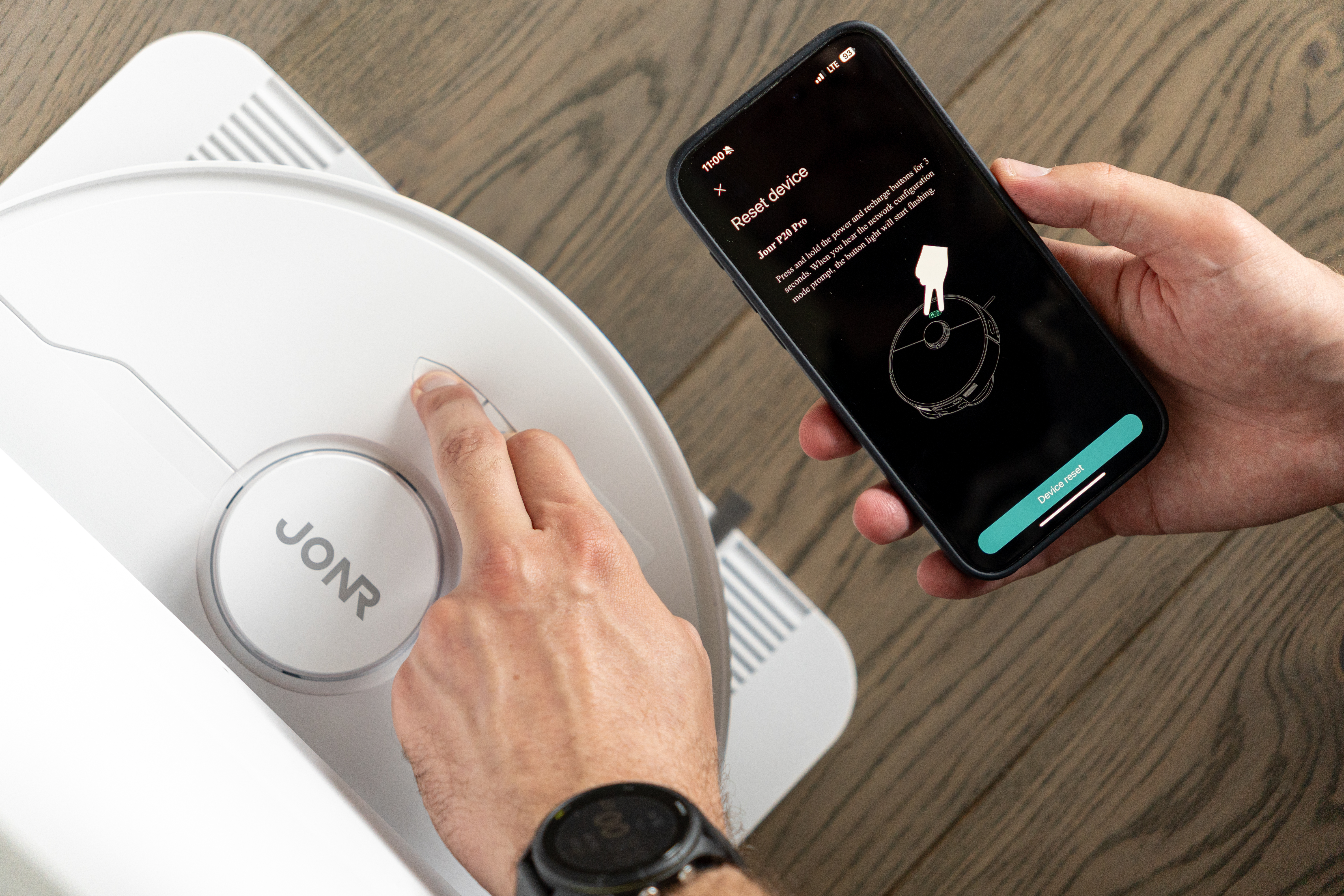
The first map creation is amazingly fast. A map of 104 m² was created in just 13 minutes. The app automatically divides the rooms, and the map can be edited manually. Multiple maps for different floors are available.

You can also choose the cleaning sequence, which rooms will be cleaned first. In the app, you can set the robot's cleaning in relation to carpets: choose to have the robot avoid them completely (suitable for long-pile carpets), ignore only doormats, or enable the "Carpet Boost" function to increase suction power when driving over carpet. Of course, the Jonr P20 Pro's cleaning cloths automatically lift when driving over carpet.
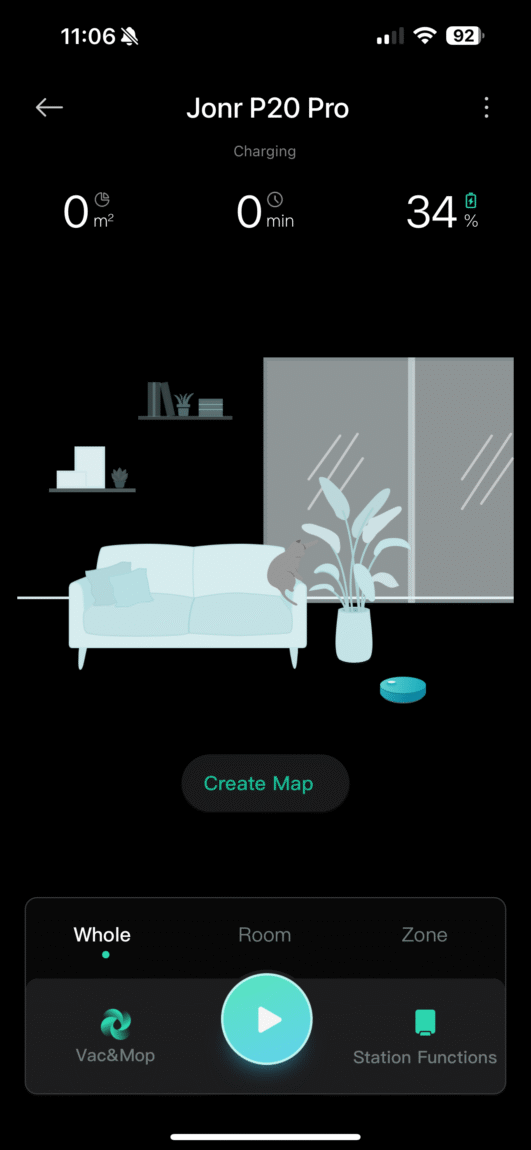
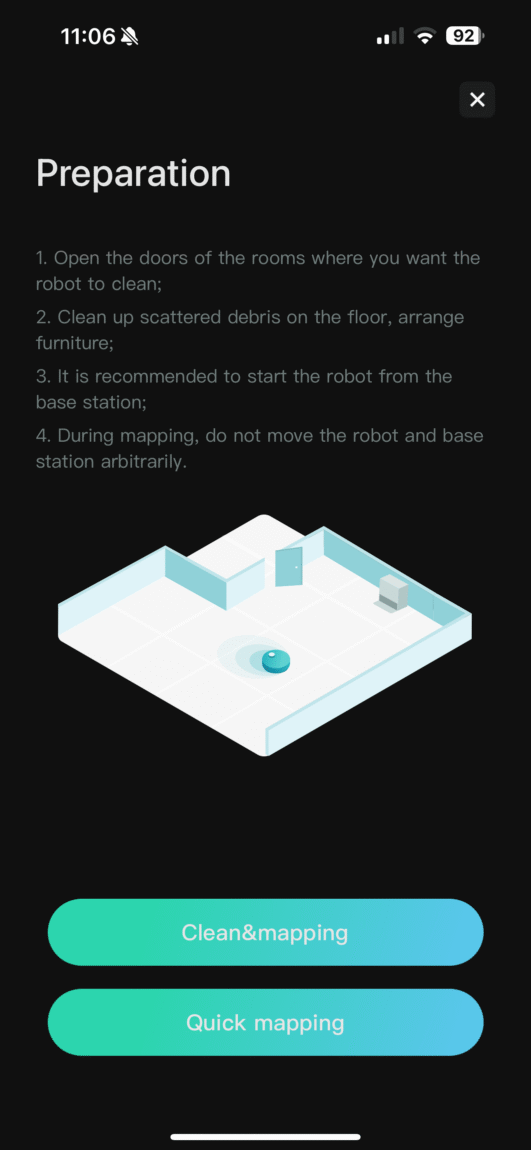
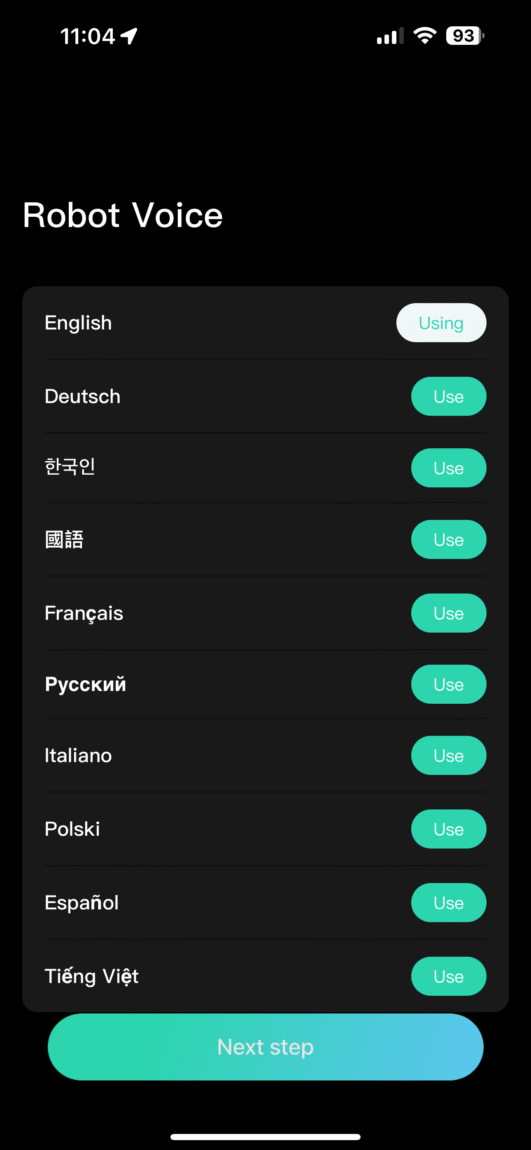
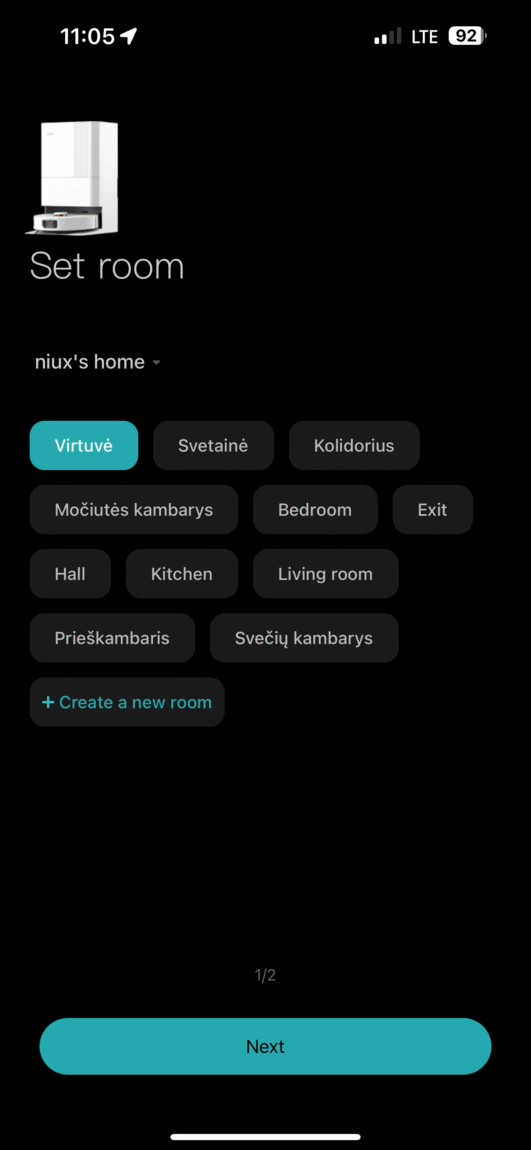

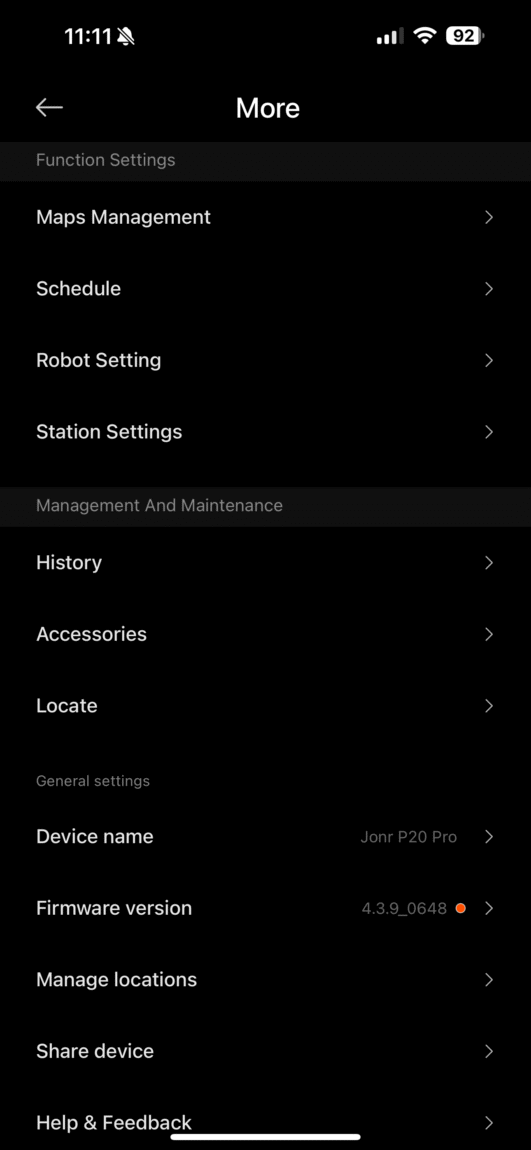
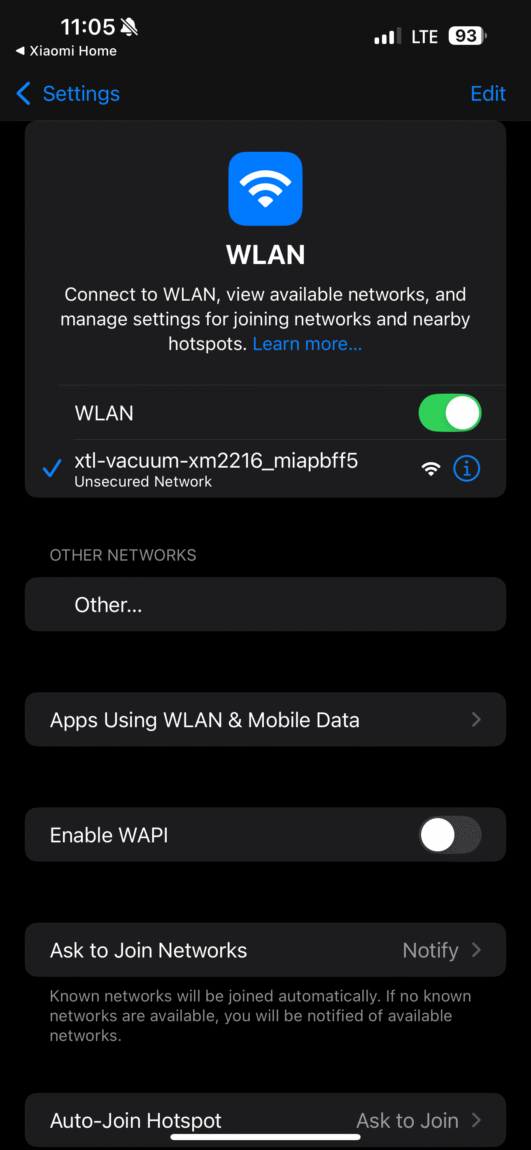
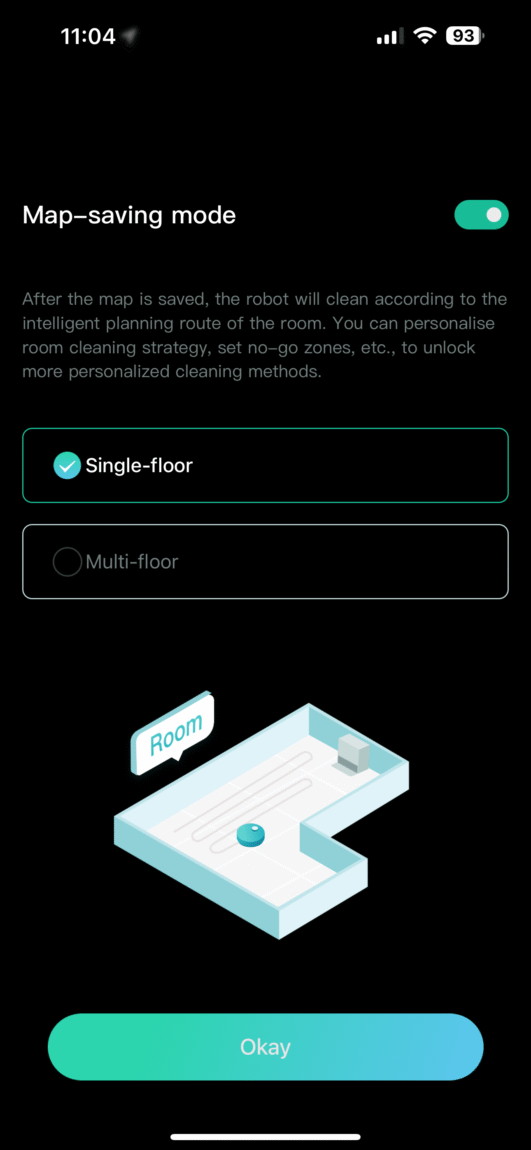
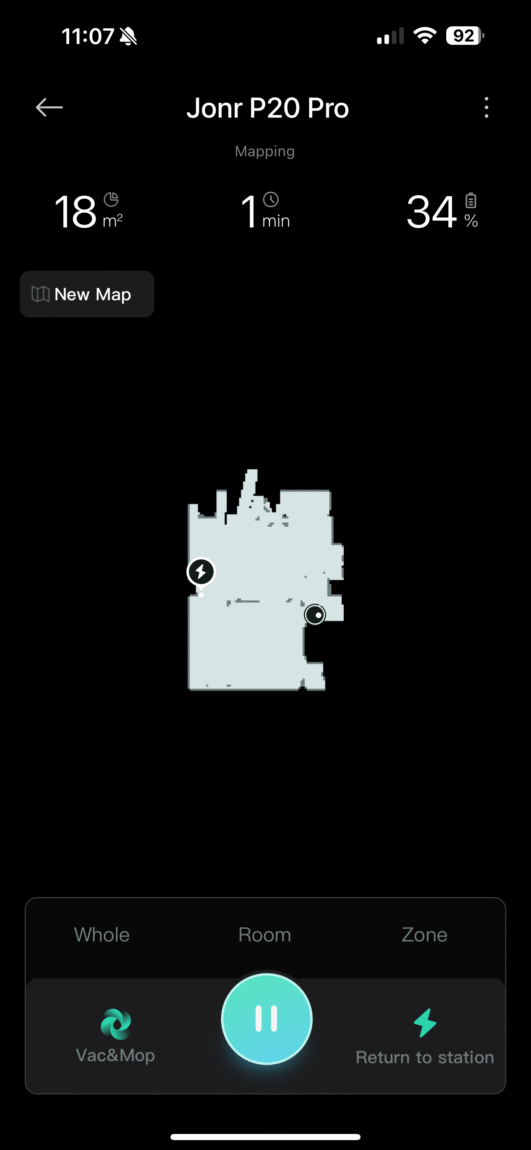
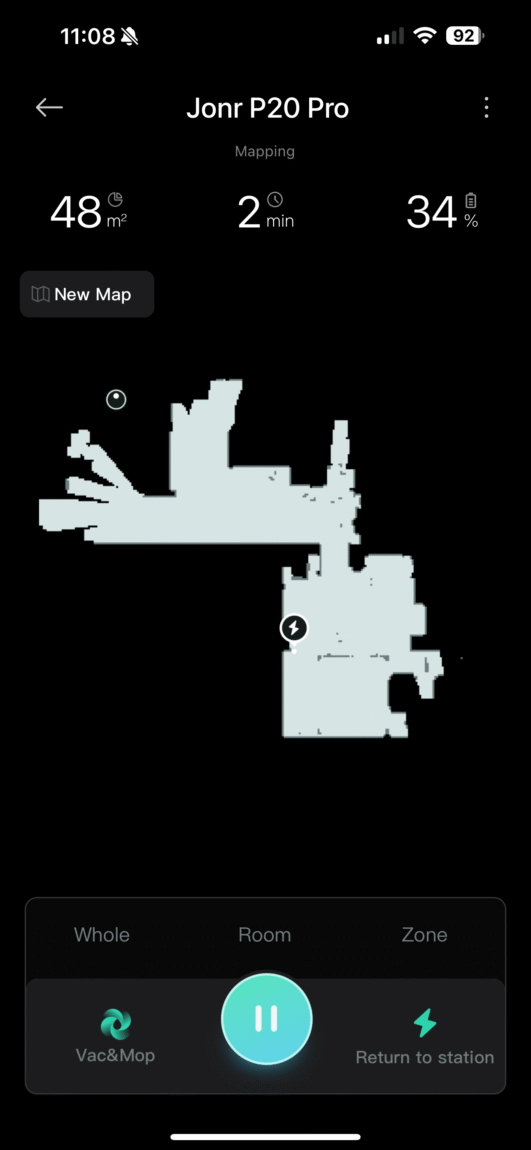
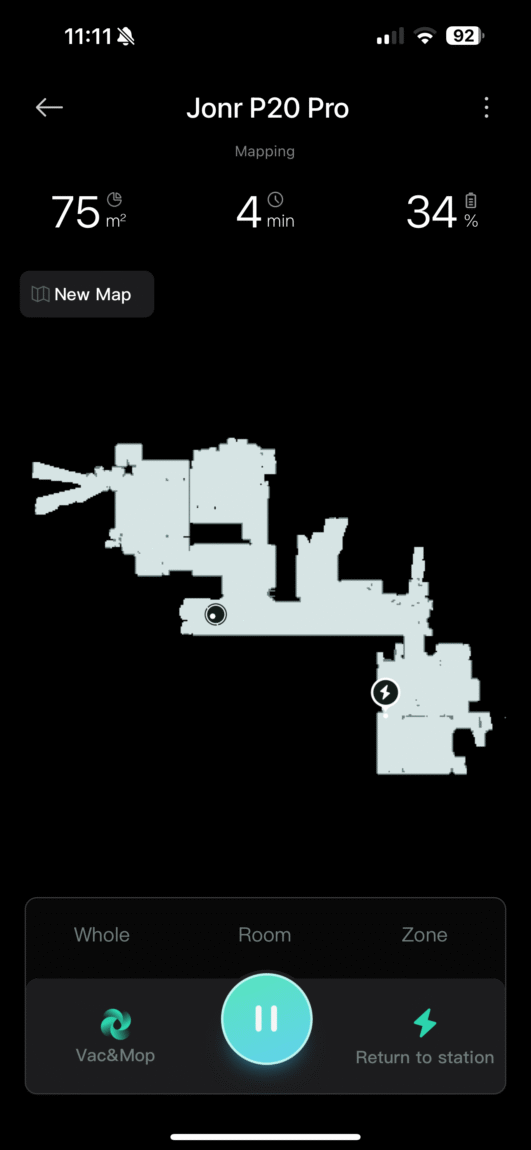
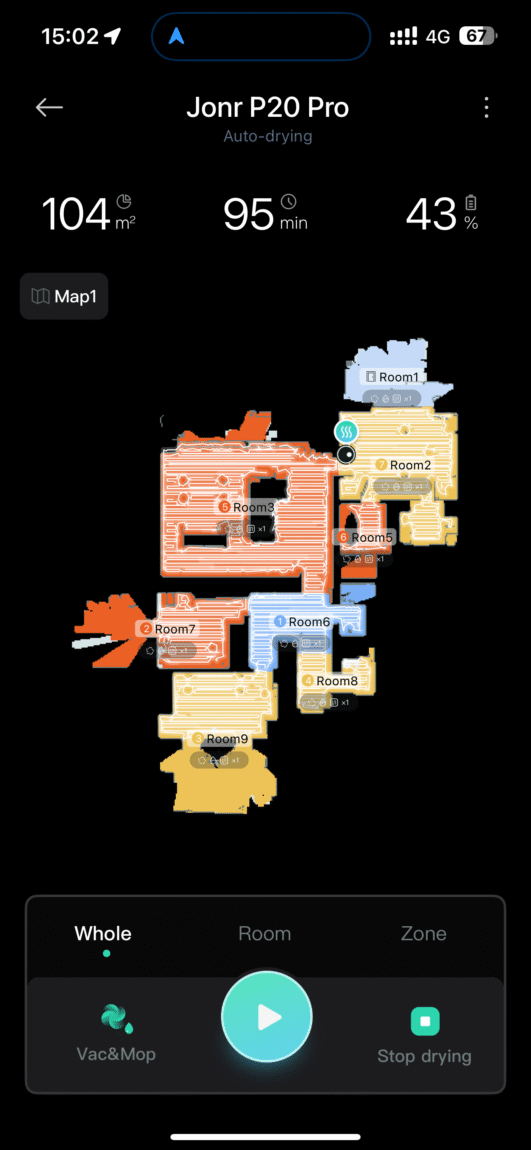
Several cleaning modes are available: vacuuming only, mopping only, combined vacuuming and mopping at the same time, or vacuuming first, then mopping. Four levels are offered to set the suction intensity: quiet (almost inaudible), normal (you can watch TV), strong (you need to turn up the TV volume) and turbo (powerful, but noisy).
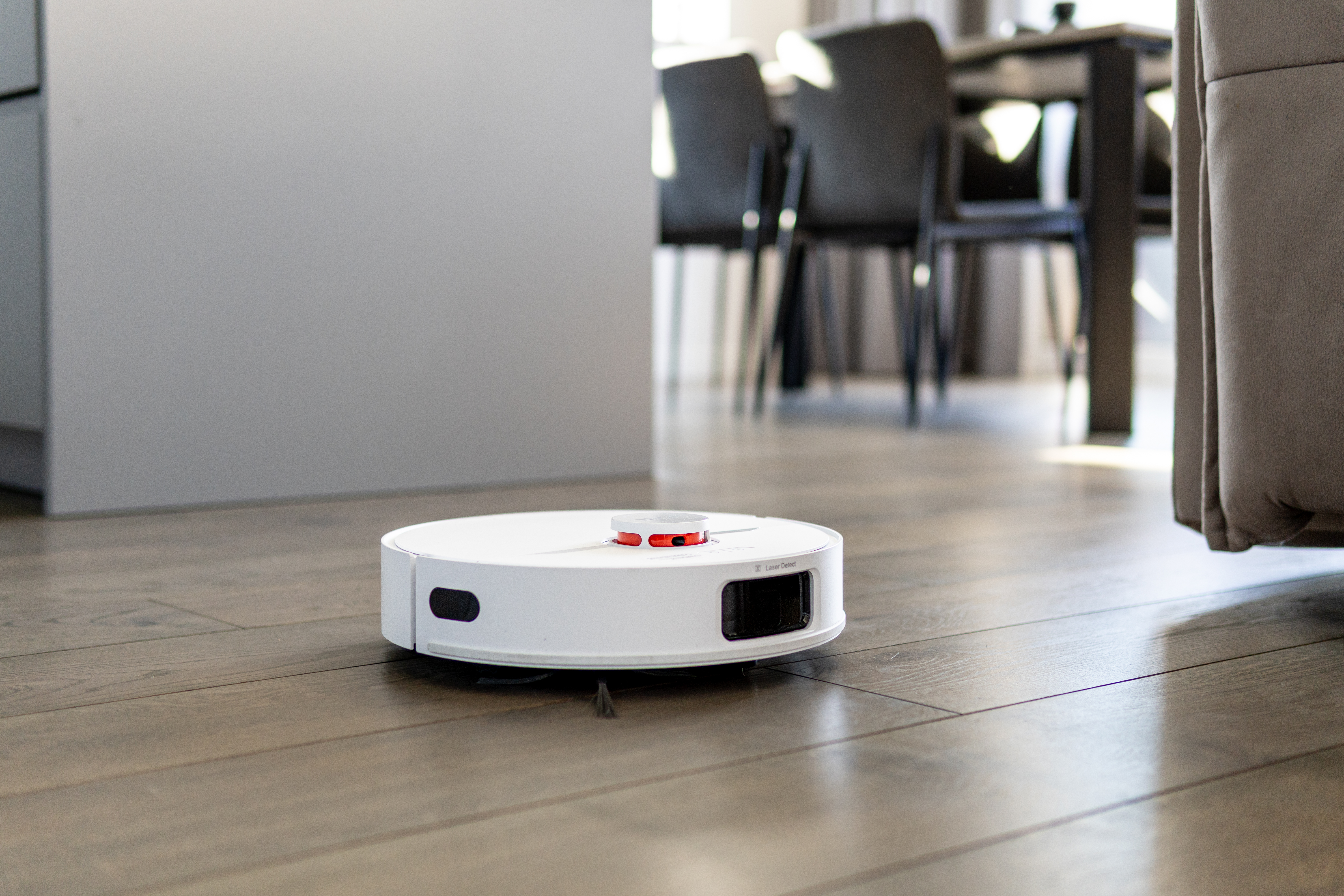
For washing, as with most robot vacuums, you can choose the level of humidity: standard, deep and intensive, as well as the robot's movement style: rare, normal and dense. The robot's movement style is a fairly new thing, it means that the robot will either move widely enough, i.e. not overlap with the place it has already traveled, or narrowly enough and partially cover the places it has already traveled.
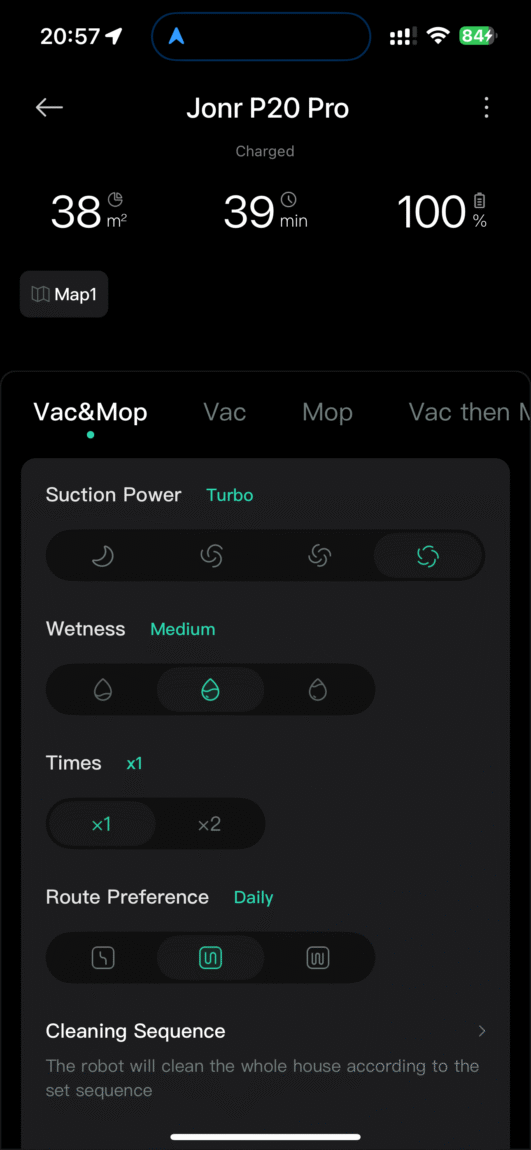

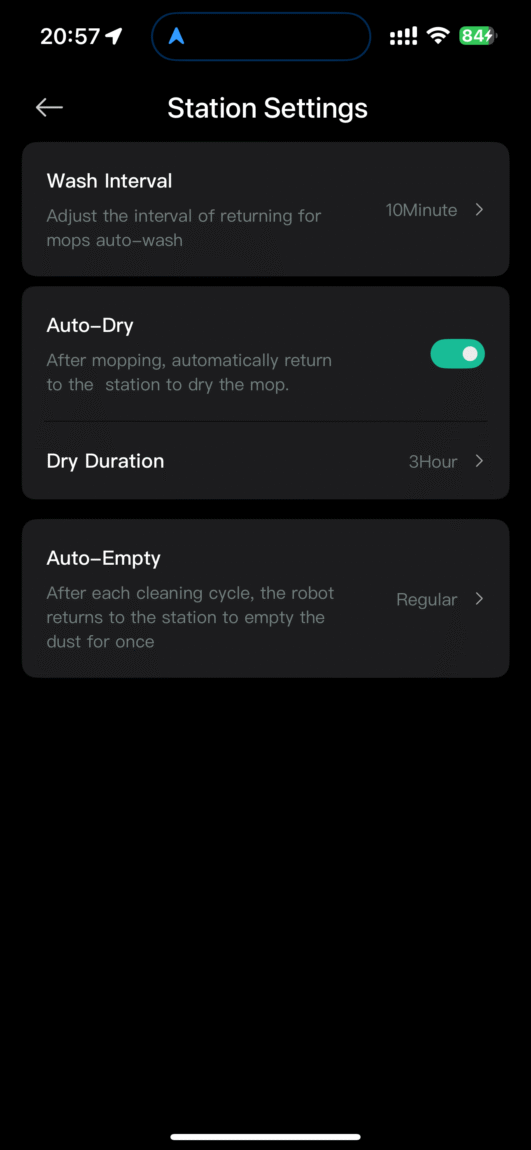

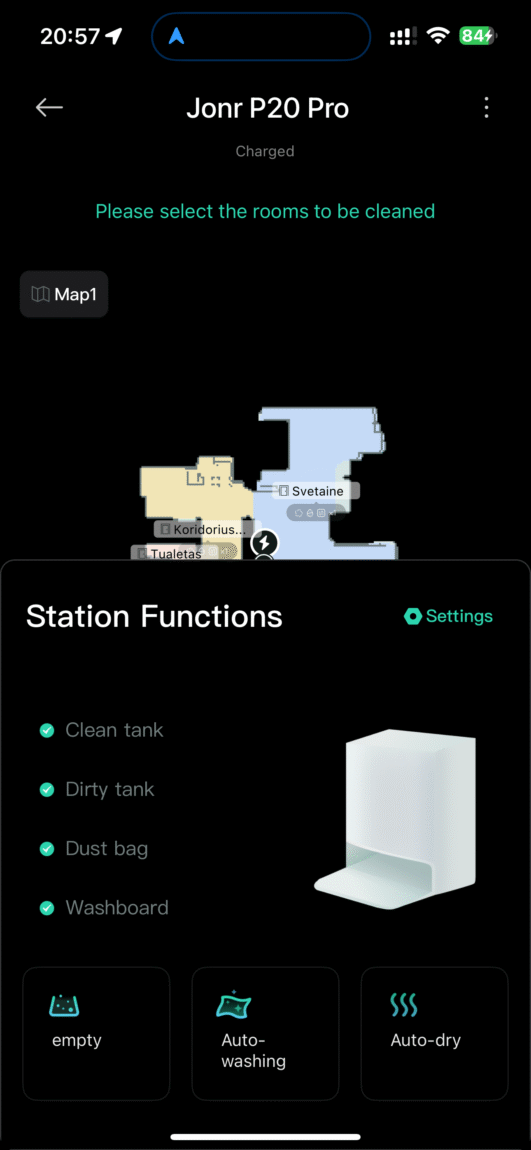
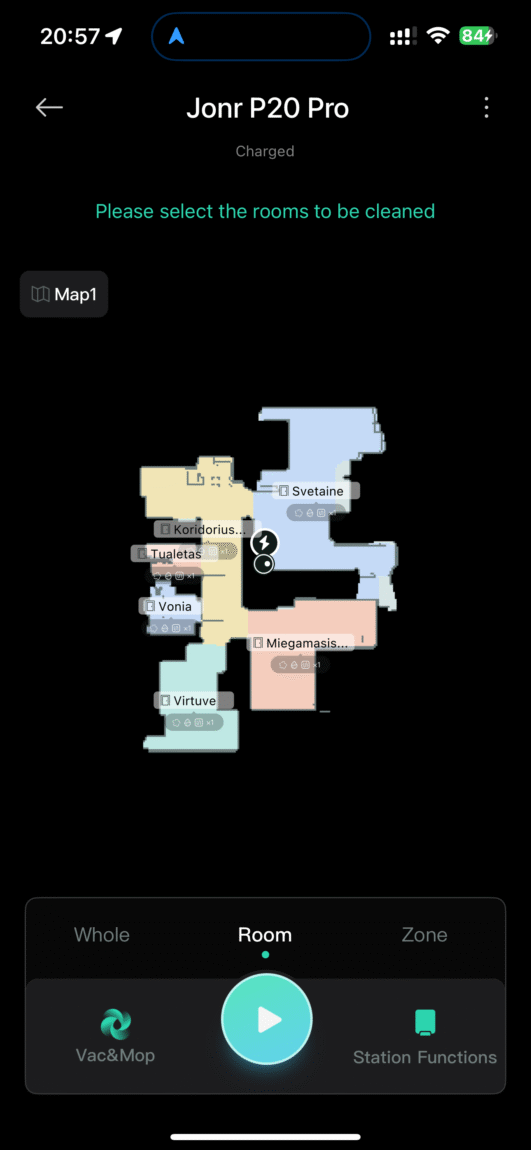
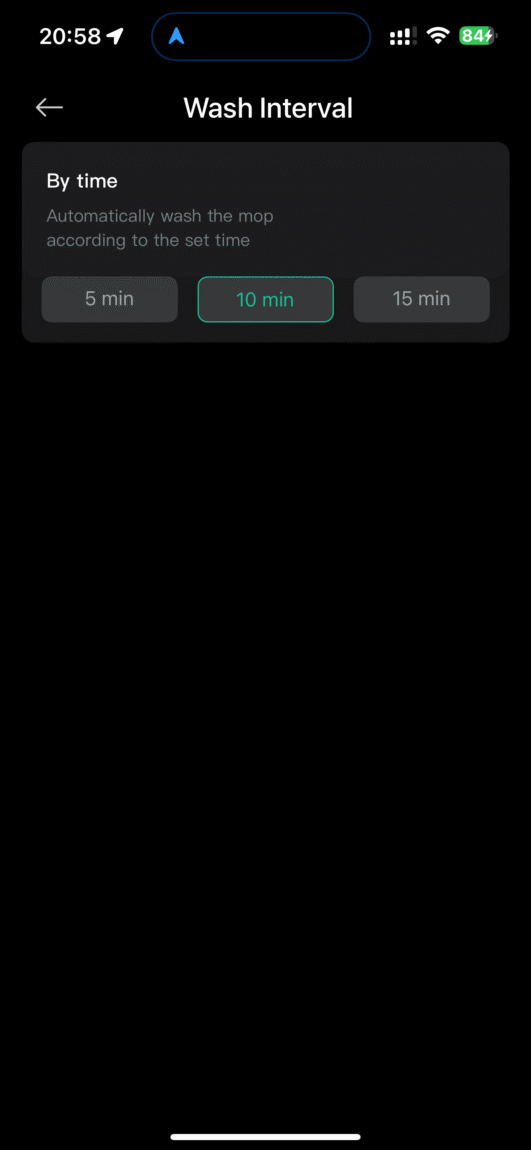
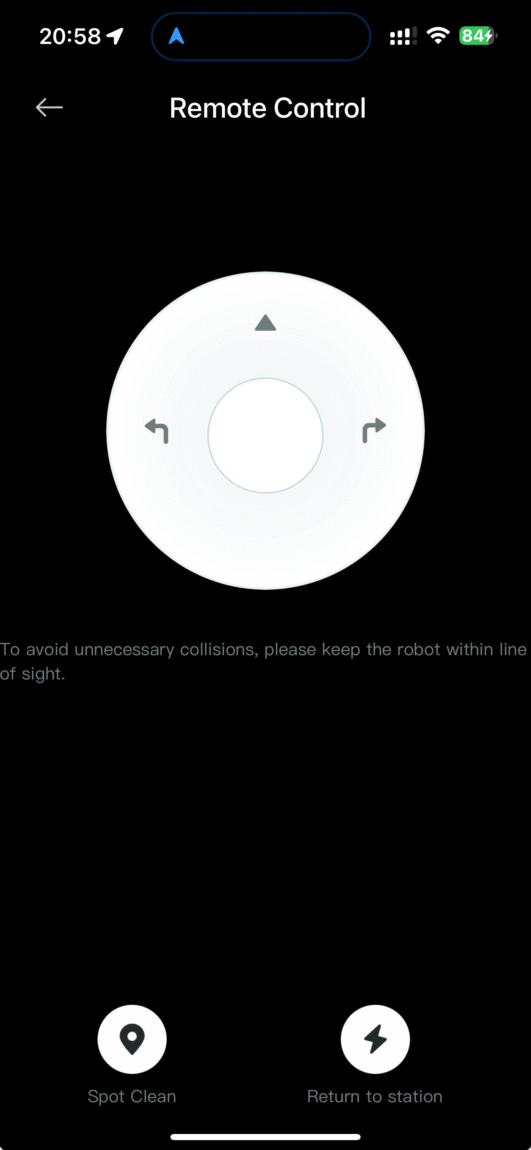
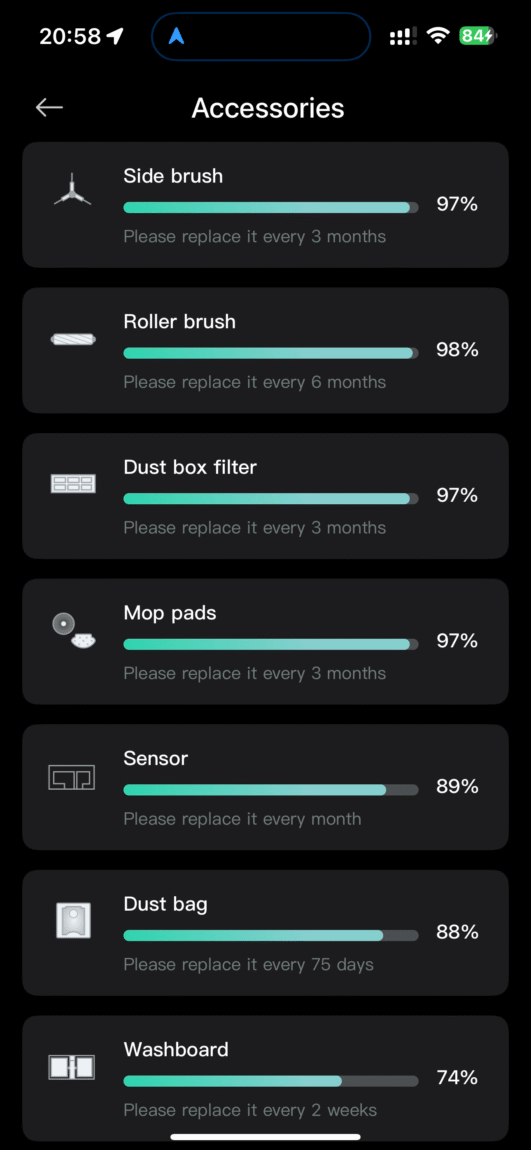
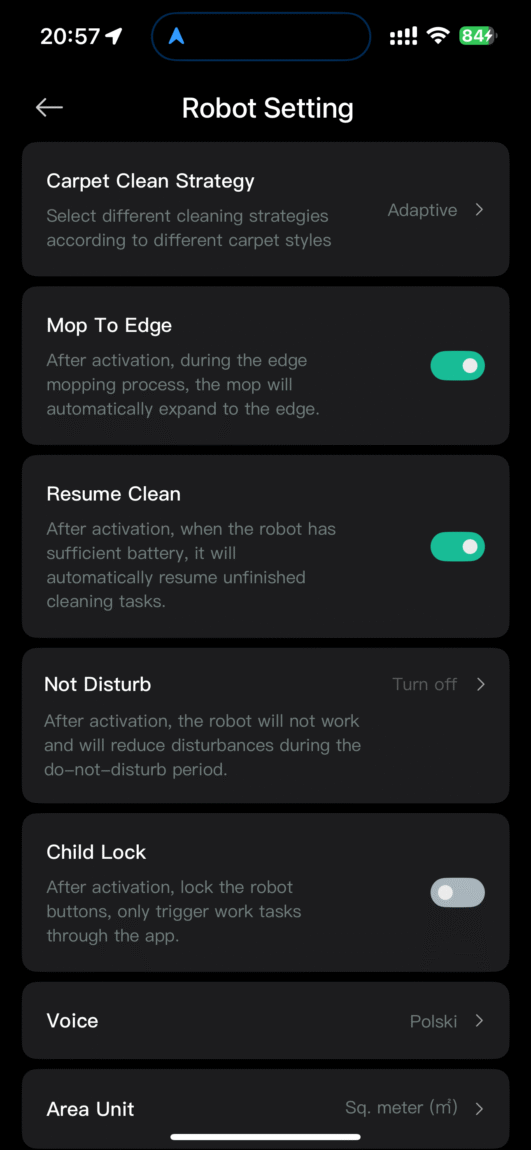
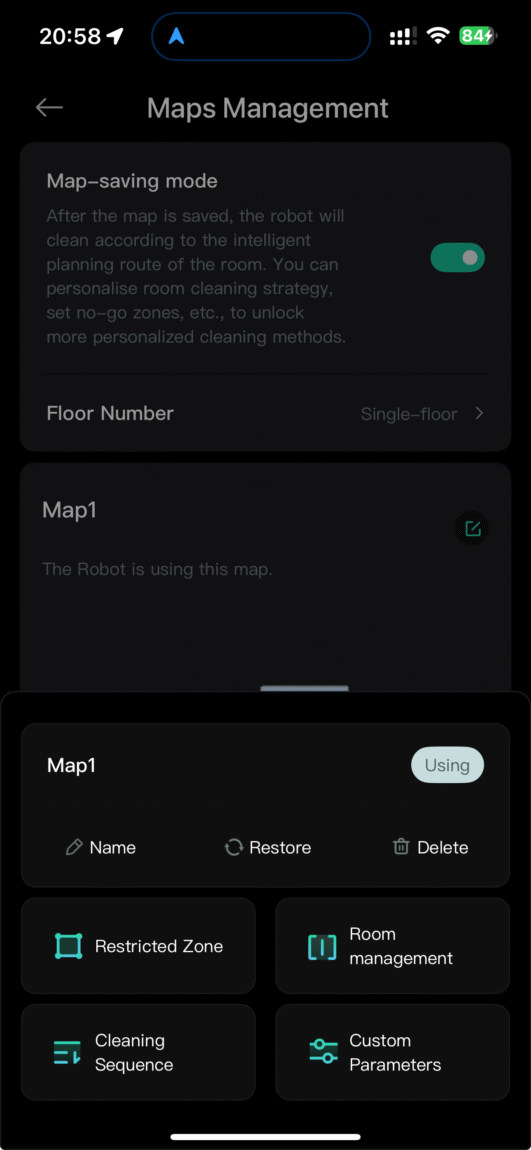
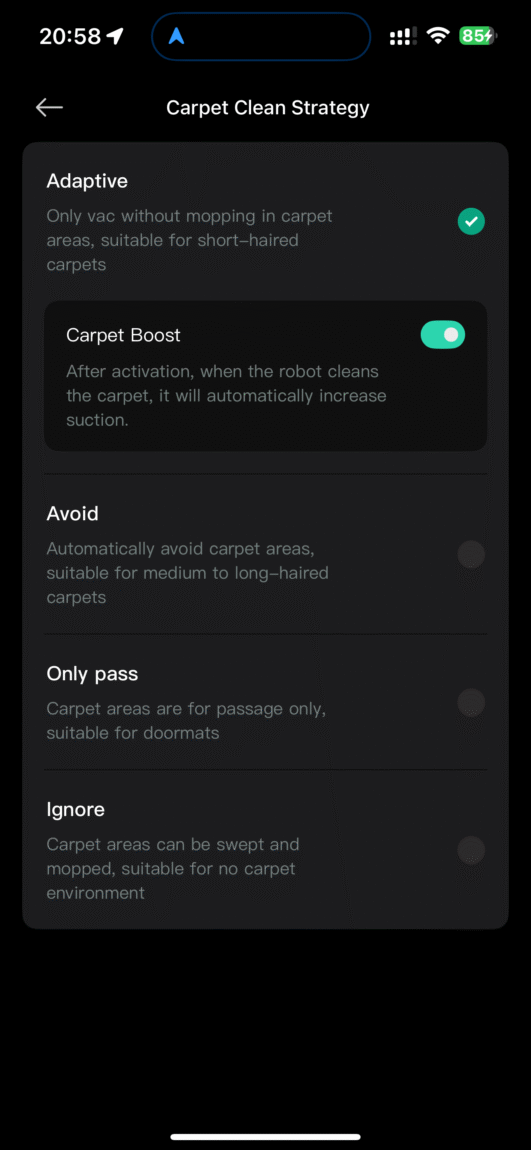
Smart station functionality
The uniqueness of the Jonr P20 Pro is its smart station, which performs not only dust collection, but also cloth washing and drying functions. The uniqueness here is not so much technological, but rather in terms of price.
Washing the cloth: You can set the cleaning intervals – every 5, 10 or 15 minutes. It is convenient that the cleaning frequency of the cloth can be changed in real time, even during work, extending it to 15 minutes.
Drying the cloth: You can choose the drying time – 2, 3 or 4 hours. This helps prevent unpleasant odors and mold.
Emptying the dust container: You can set the dust container to be emptied every 5 days, disable this function, or set the dust container to be emptied every time the robot returns to the dock.
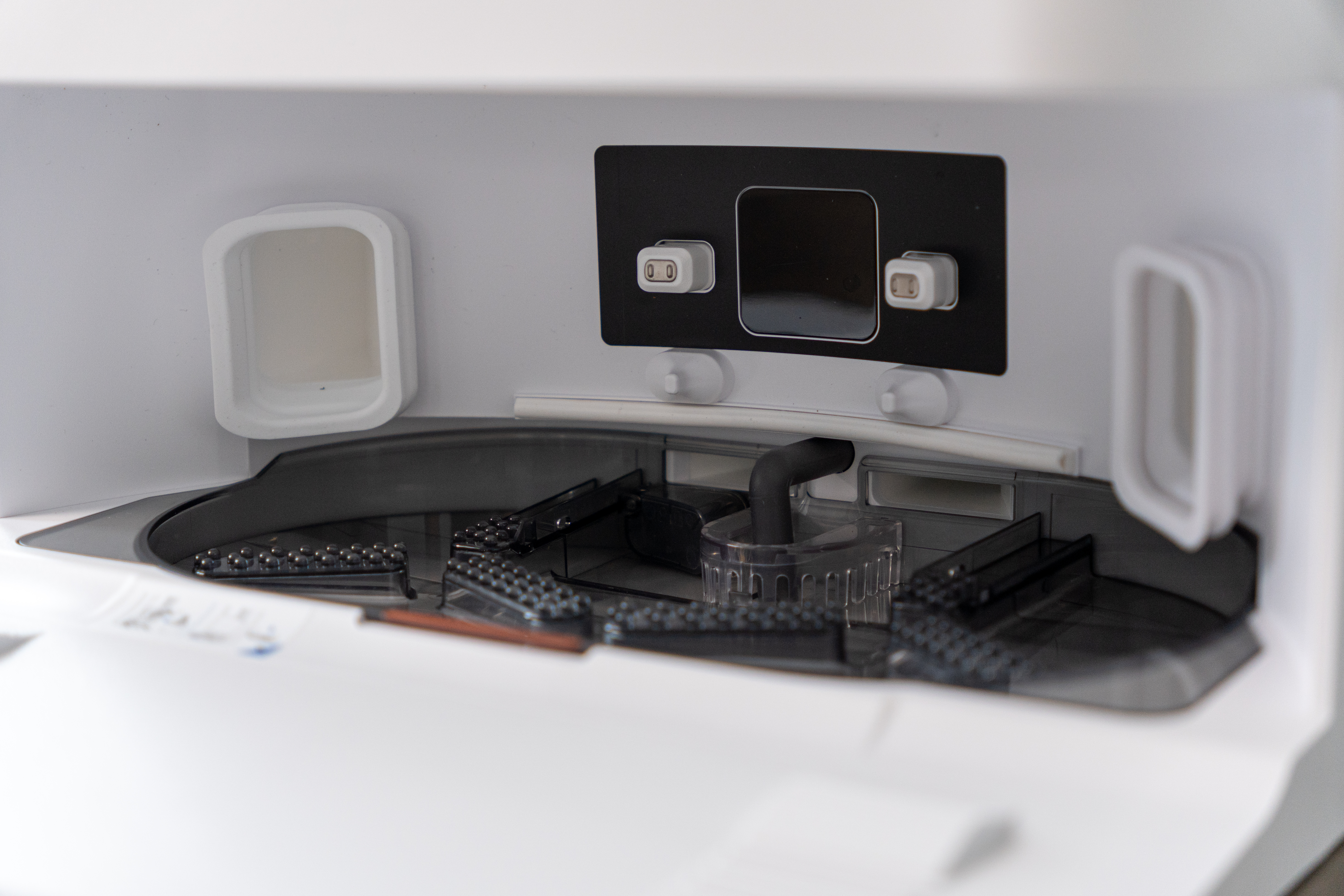
Although the 10-15 minute interval for rinsing the mops seems sufficient (I have set this for my Roborock Qrevo), I noticed a significant drawback - after about 7 minutes (depending on the humidity of the cleaning and the choice of movement style), the working mop dries out. So it is best to set the robot to return to the station every 5 minutes. However, keep in mind that if you choose the “dense” movement style, the floor may appear too wet, especially if the mops are newly placed after washing (more on this later in the text).
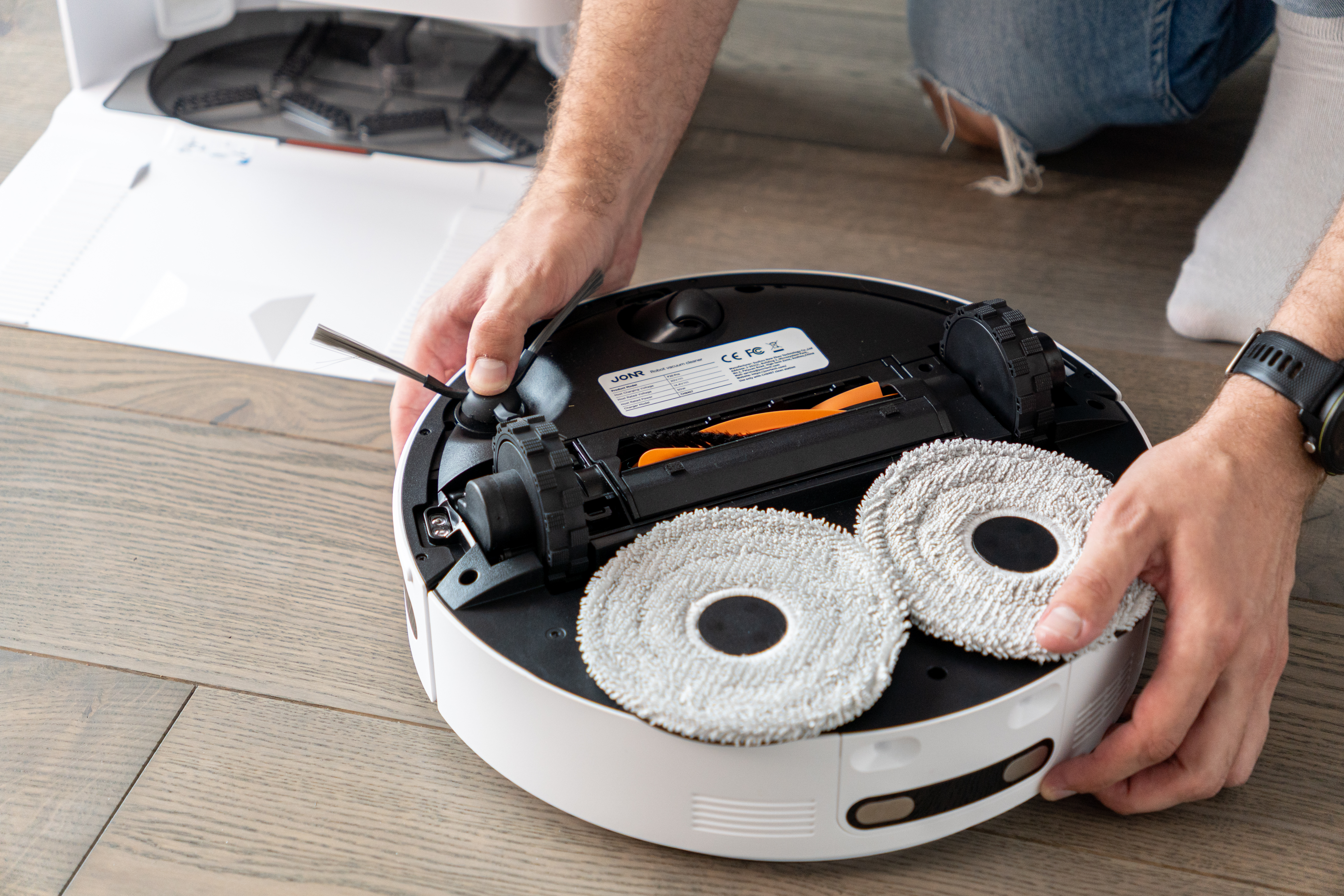
The station itself has two tanks for clean and dirty water. Their operation, i.e. removal and refilling / emptying, does not cause any problems and is simple and convenient. Also, after each wash, the app automatically reminds you to pour out dirty water to avoid unpleasant odors, and about every month - to clean the base of the station itself, where the cloths are washed
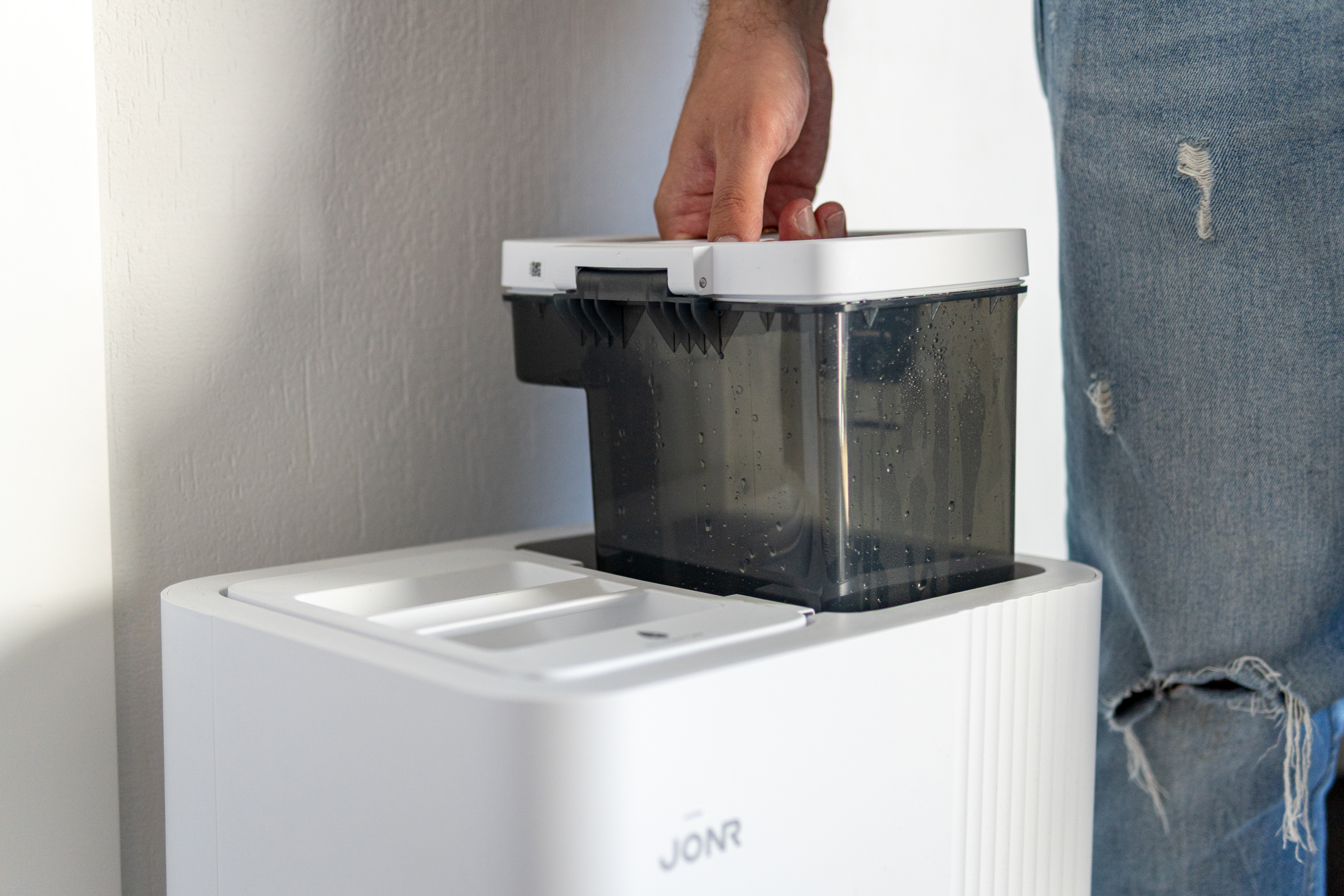
It should be noted that the suction roller itself is slightly shorter than most Xiaomi robots. Although, in my opinion, this does not affect the suction, but coincidence or not, it gets tangled up with long hair much less - in two months it did not need to be cleaned once. What can not be said about the side brush, which wraps around the hair quite quickly and needs to be periodically removed from the robot and cleaned. Facilitation - there is no usual screw that holds the cloth, and instead of it the click function - very convenient and fast.
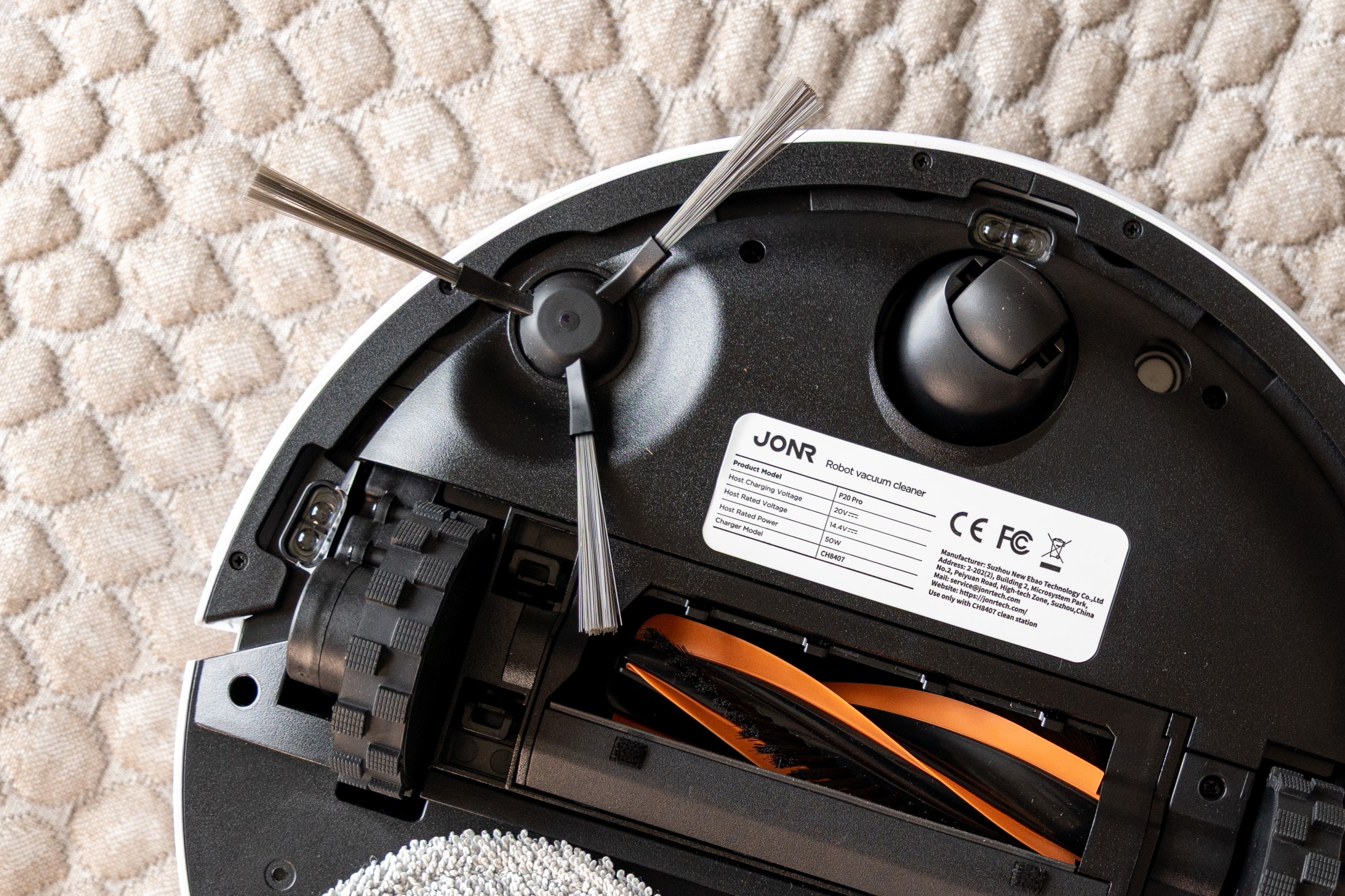
Navigation and cleaning efficiency
The robot features advanced LiDAR 360 laser navigation, which ensures efficient home mapping and route planning. However, like many robots, the Jonr P20 Pro faces some challenges...
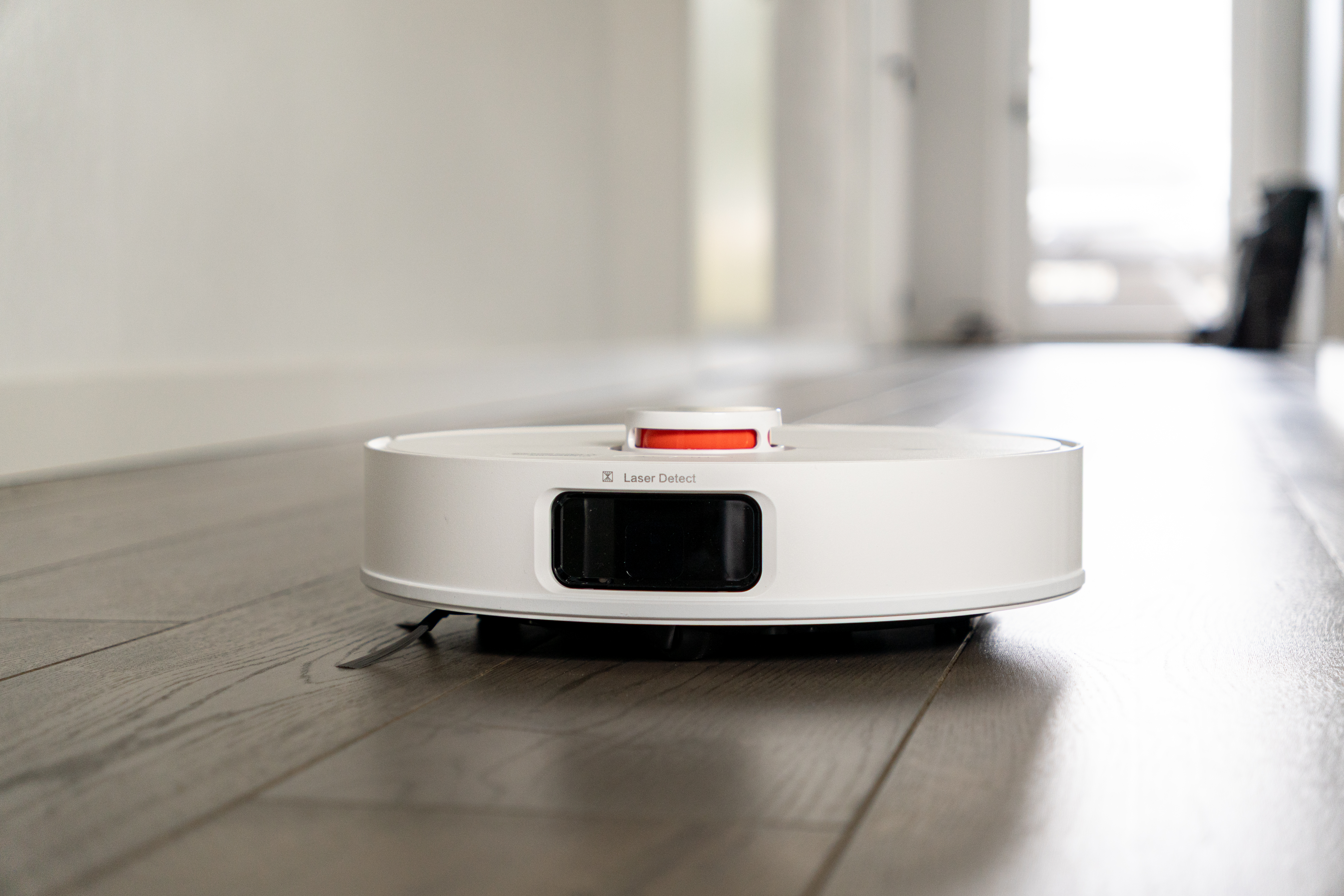
Narrow spaces - The console table, which is clearly too narrow for the robot's dimensions, causes trouble. It takes the robot about a minute to realize that it cannot pass through. This shows that, despite good obstacle detection, the robot does not always effectively estimate its own dimensions in very narrow spaces.
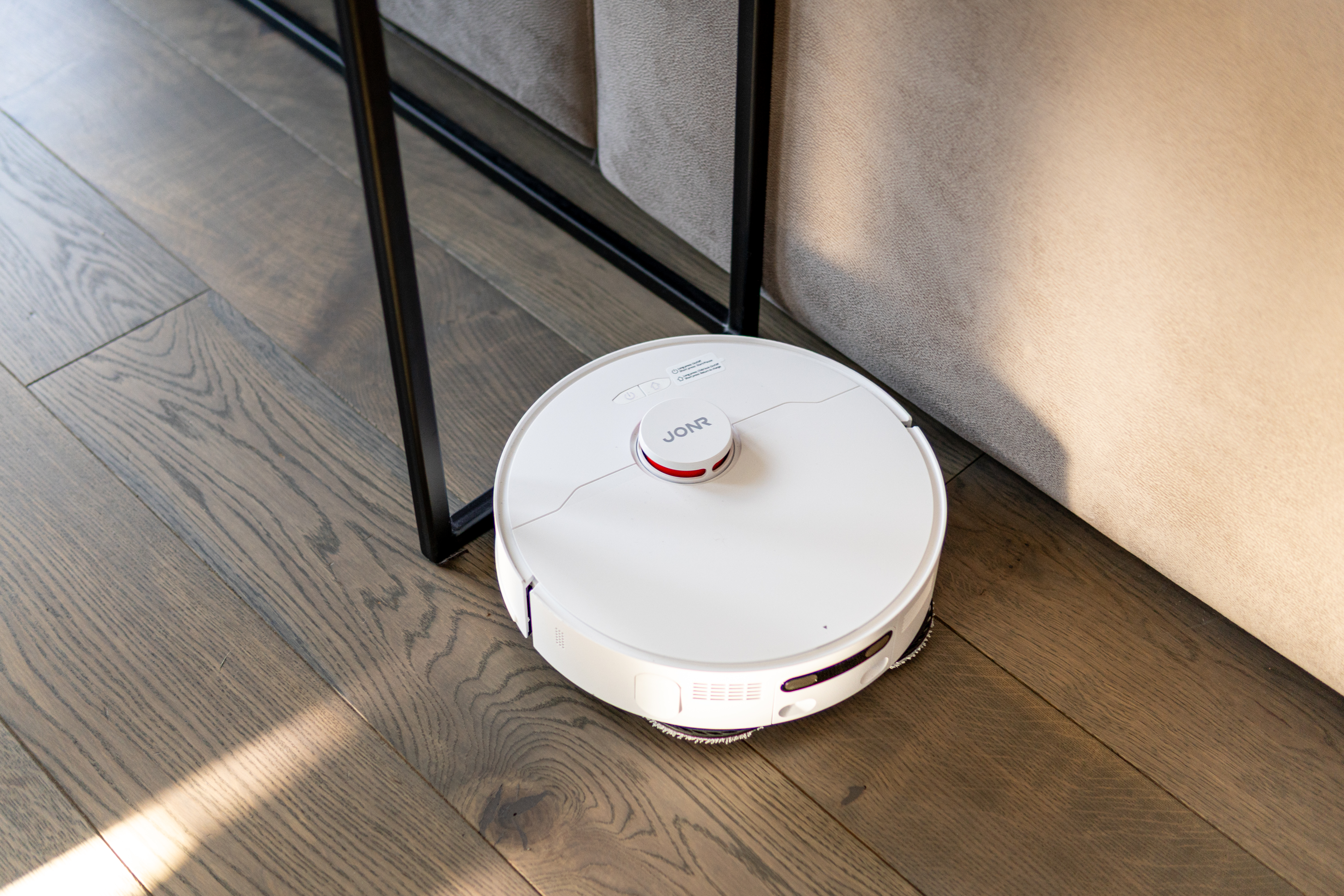
"Invisible" obstacles - I noticed that the robot only comes 10 cm to the window (the window is a display window) and stops there, perhaps "seeing" itself as an obstacle. However, this is only at windows that are close to the ground. If you have a spreader, you will avoid this problem. Of course, it would be easier if the app had obstacle detection and bypass settings, but unfortunately, there is none.
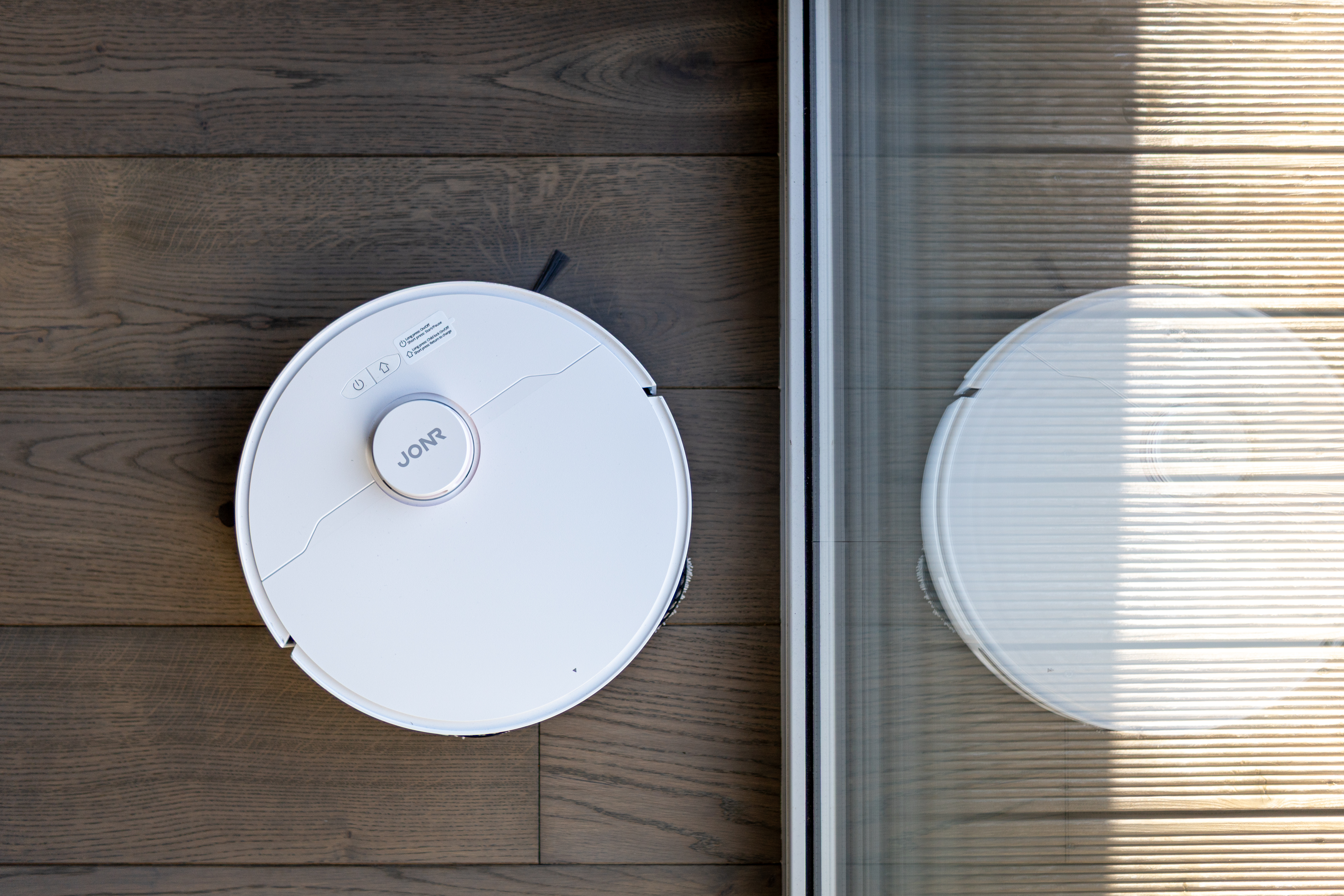
Obstacle behavior - the cable is screwed in, the sock is pushed but not run over, toys (e.g., a Nerf gun) are pushed until they are pushed away. Most often, the robot does not brake against small objects, but tries to push them - until it gets stuck or sucks them in.
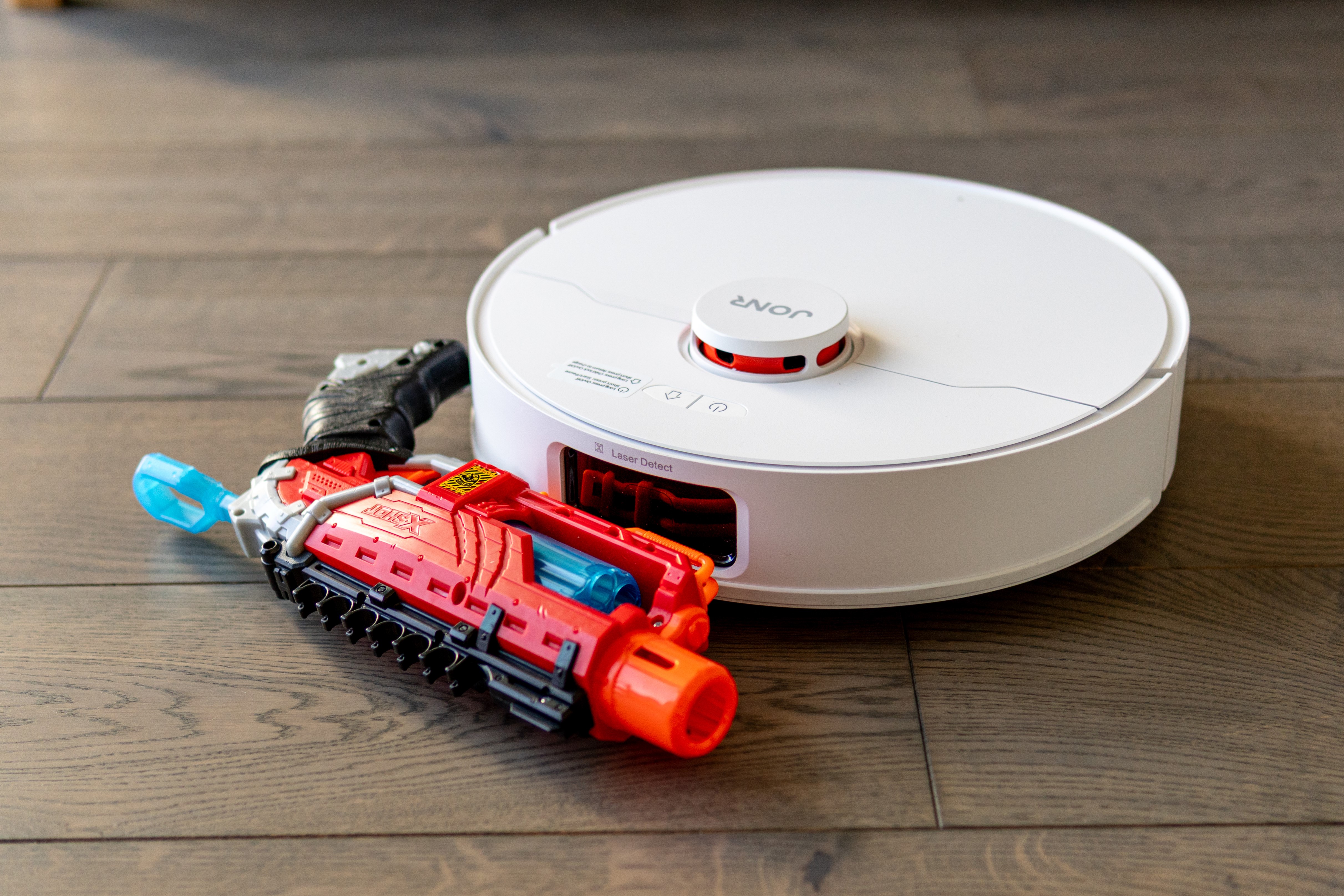
Innovative cleaning with a protruding cloth
One of the most interesting and useful aspects of the Jonr P20 Pro is its protruding mop, which extends sideways when cleaning along walls, ensuring that it cleans right up to the edge. This is a big advantage compared to many other robots that leave dirty edges.
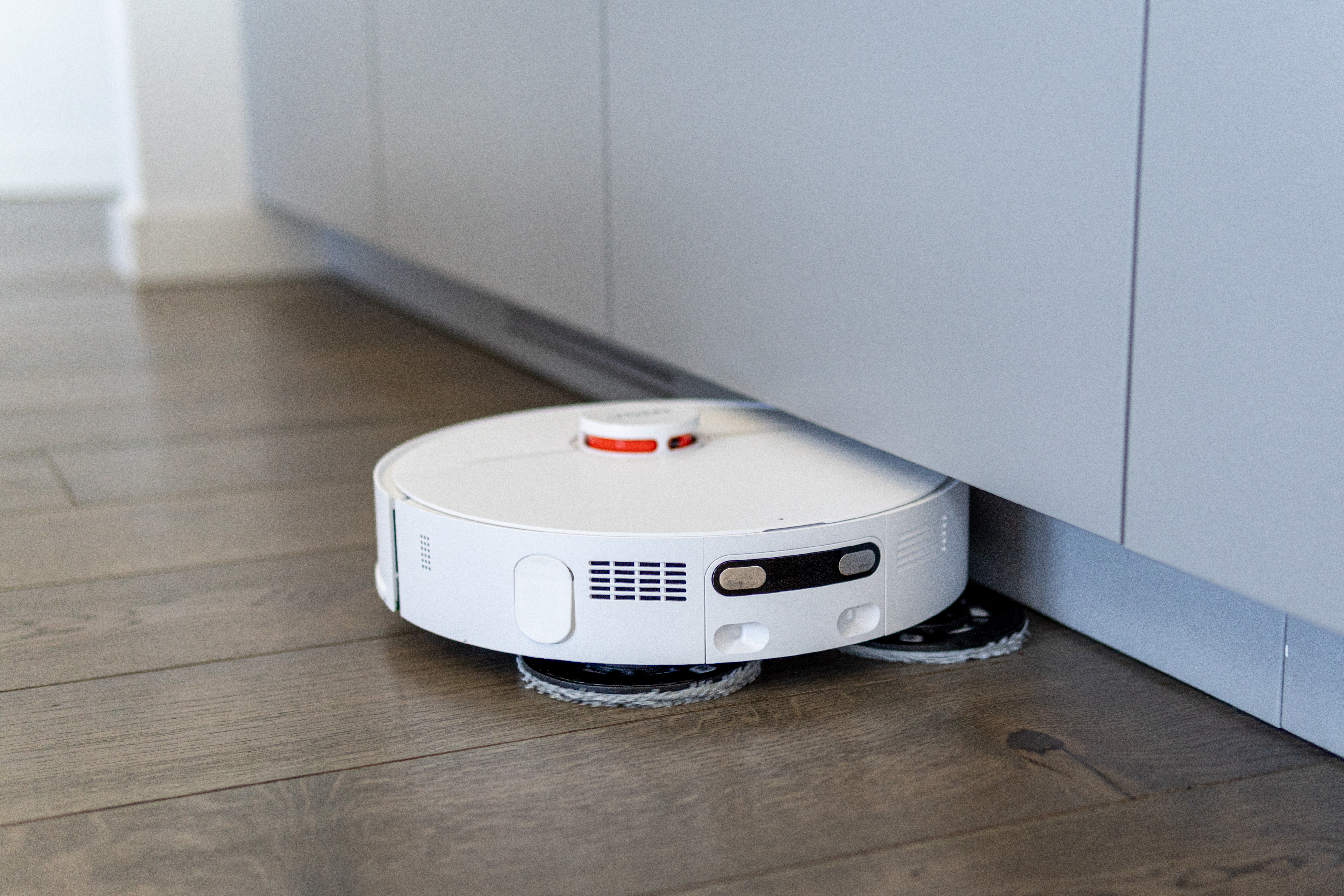
I did notice that when moving with the mop extended, it moved slower and sometimes got stuck. So if for some reason you don't need this feature (say, because of a long-haired carpet near the wall), you can turn it off in the app with the click of a button.
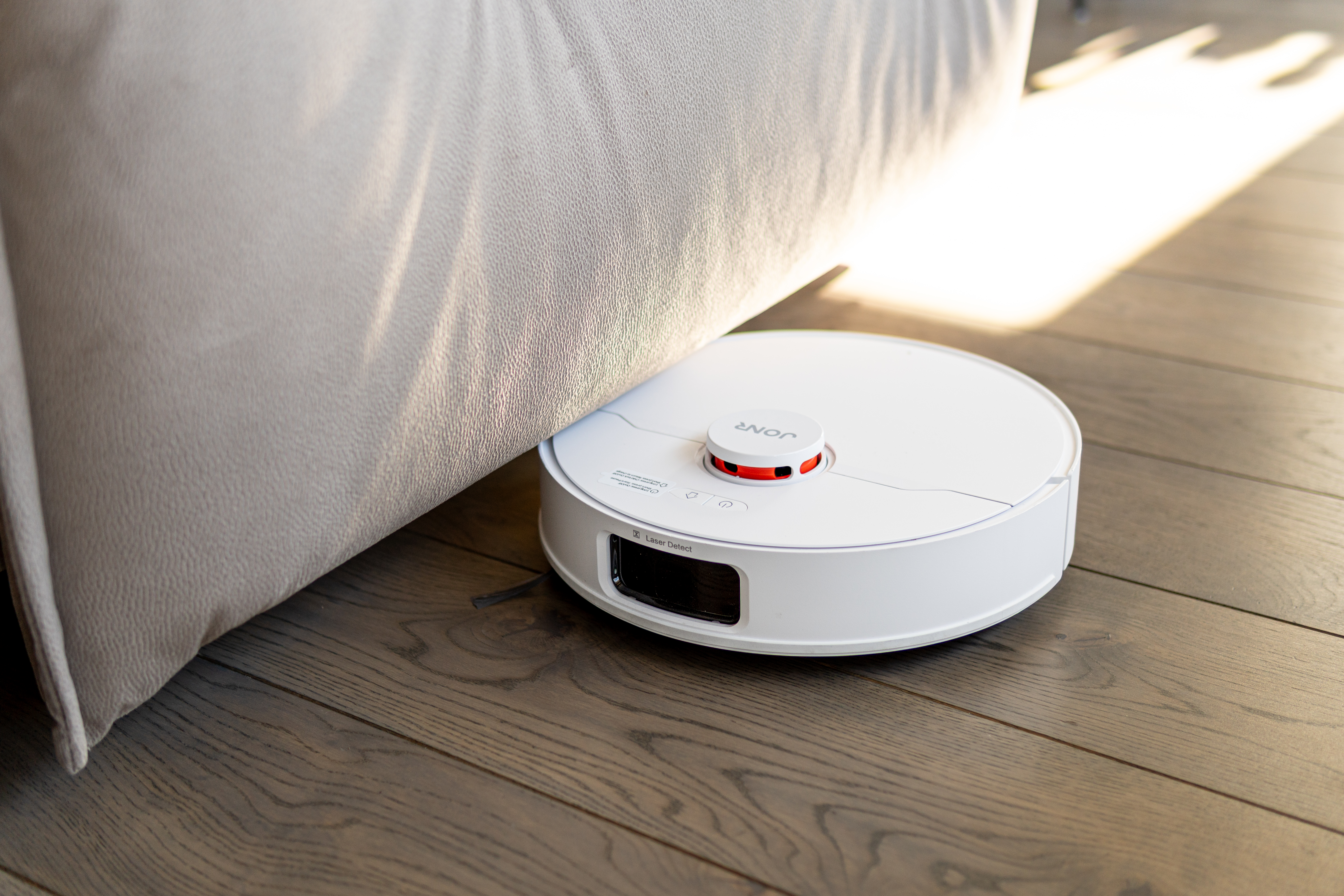
Suction efficiency
For everyday cleaning, the Jonr P20 Pro proved to be really solid - it collects crumbs, dust, small debris, and the mop leaves the floor not only clean, but also visually fresh. Perhaps it was more difficult to deal with the sand that kept getting into the front door - it was not ideally sucked up if the vacuuming movement style was not selected as "dense" (yes, vacuuming also has this option).
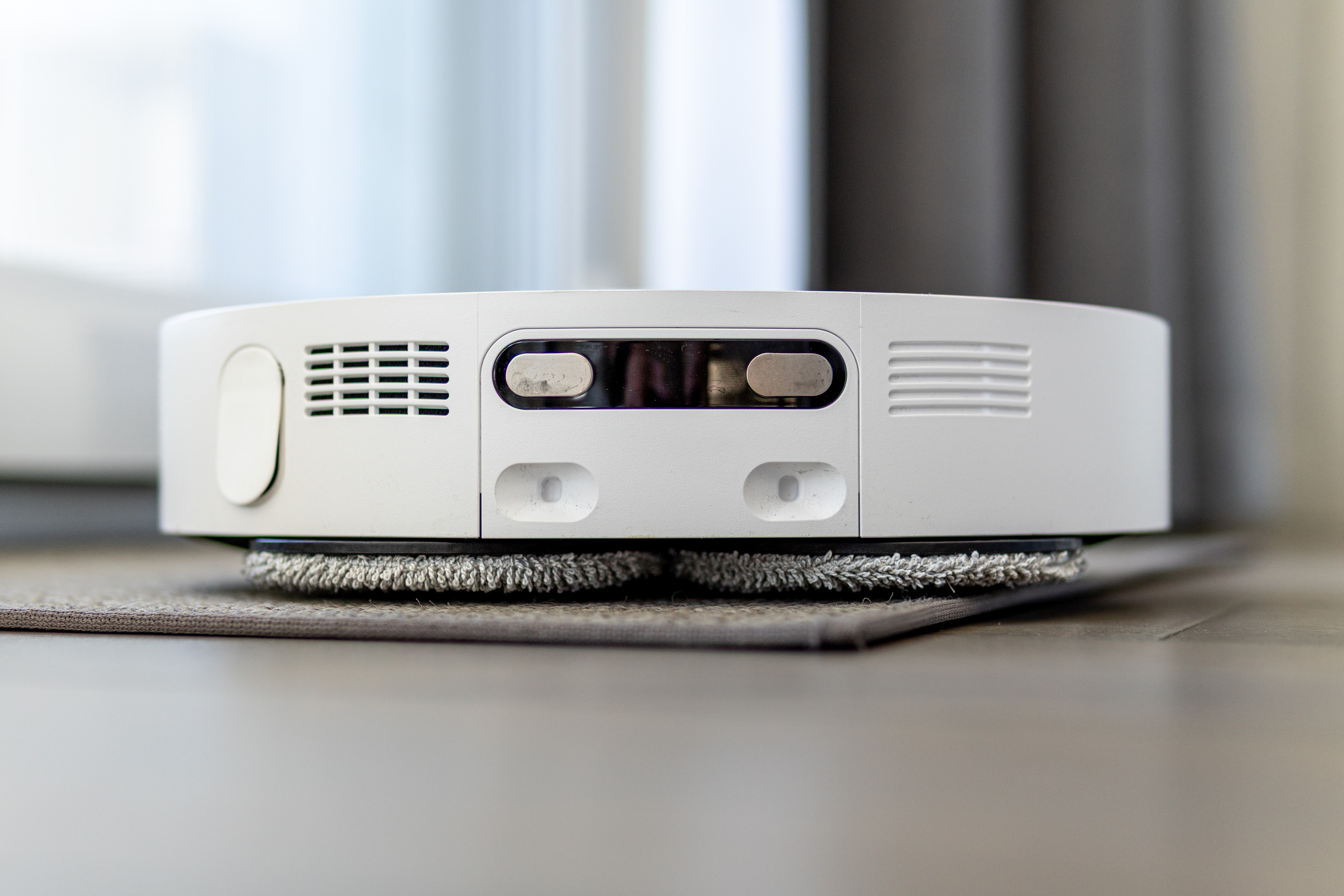
This problem can be avoided simply - turn on the "vacuum then mop" function, set the vacuum to "heavy" for vacuuming, and leave the usual movement style for mopping. However, to assess the real suction power, I performed the classic "rice test" - I sprinkled a handful of rice on the floor in different places and checked how the robot coped with it.
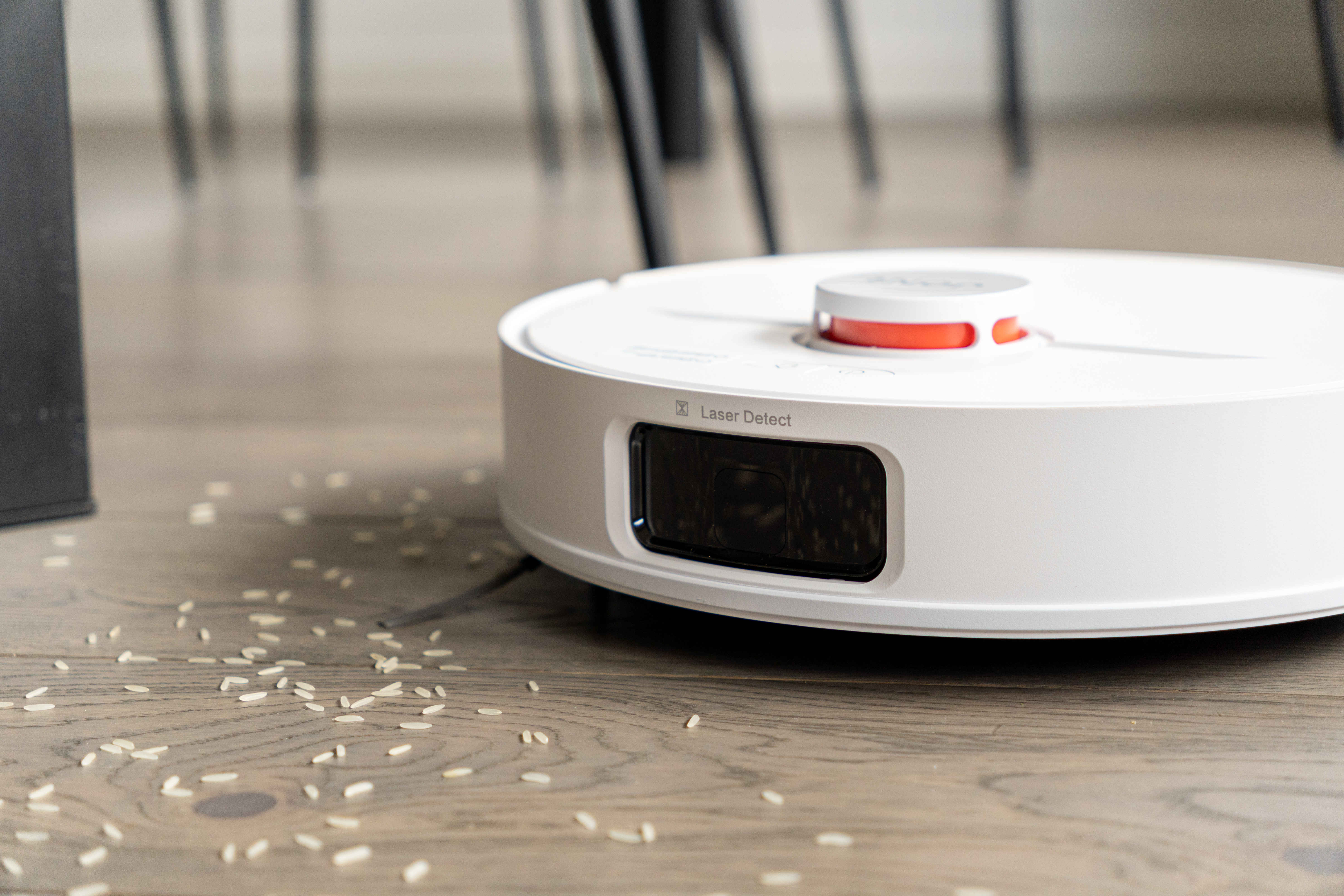
Results. Quiet mode – pushes the rice more than it sucks. The side brush comes on, which scatters the rice even further; normal mode – the situation improves a little, but some of the rice still remains unsucked; strong and turbo modes – here it starts to work properly. However, on the first pass, even in turbo mode, some of the rice remains unsucked, especially if it has spread into corners or against the walls. It took several passes to suck it all up.
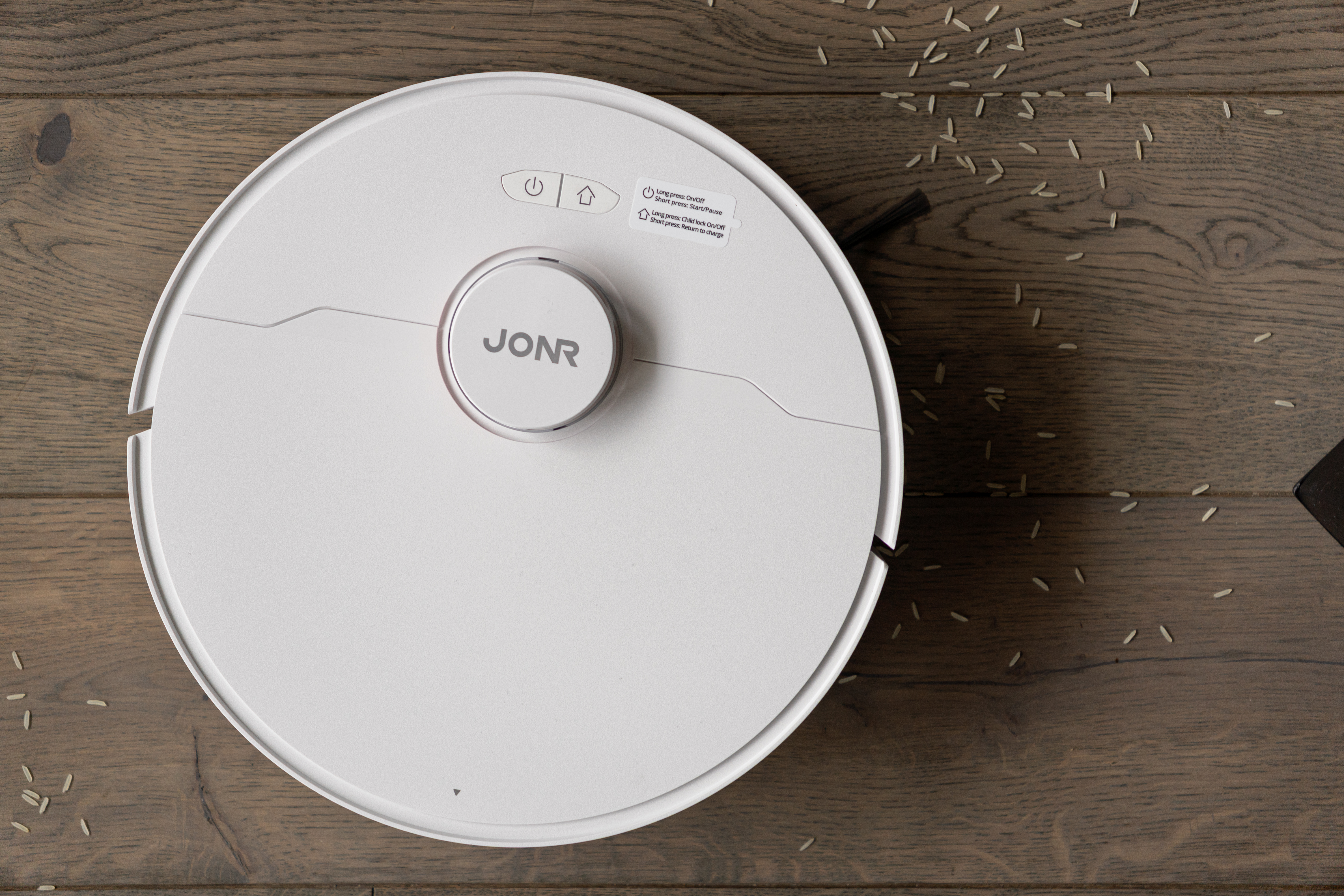
Wet cleaning
To assess the real-world cleaning capabilities, we performed a dried yogurt stain test. We can safely say that the robot did not pass it - the stains were insurmountable. However, we saw certain nuances during the test.
The first - although the cloth is easy to wash away dirt (after being soiled, the cloths were washed very well after just two washes), when they are dried, they shrink over time and lose their effectiveness. So I recommend washing them in the washing machine from time to time.
The second - although the size of the cloths is standard and will fit most robot vacuums (Xiaomi ecosystem), the cloth itself is not soft and its hairs are slightly shorter than, say, the Qrevo robot. Changing to non-original cloths makes wet cleaning better, but if you choose a dense movement style, the floor will be very wet.
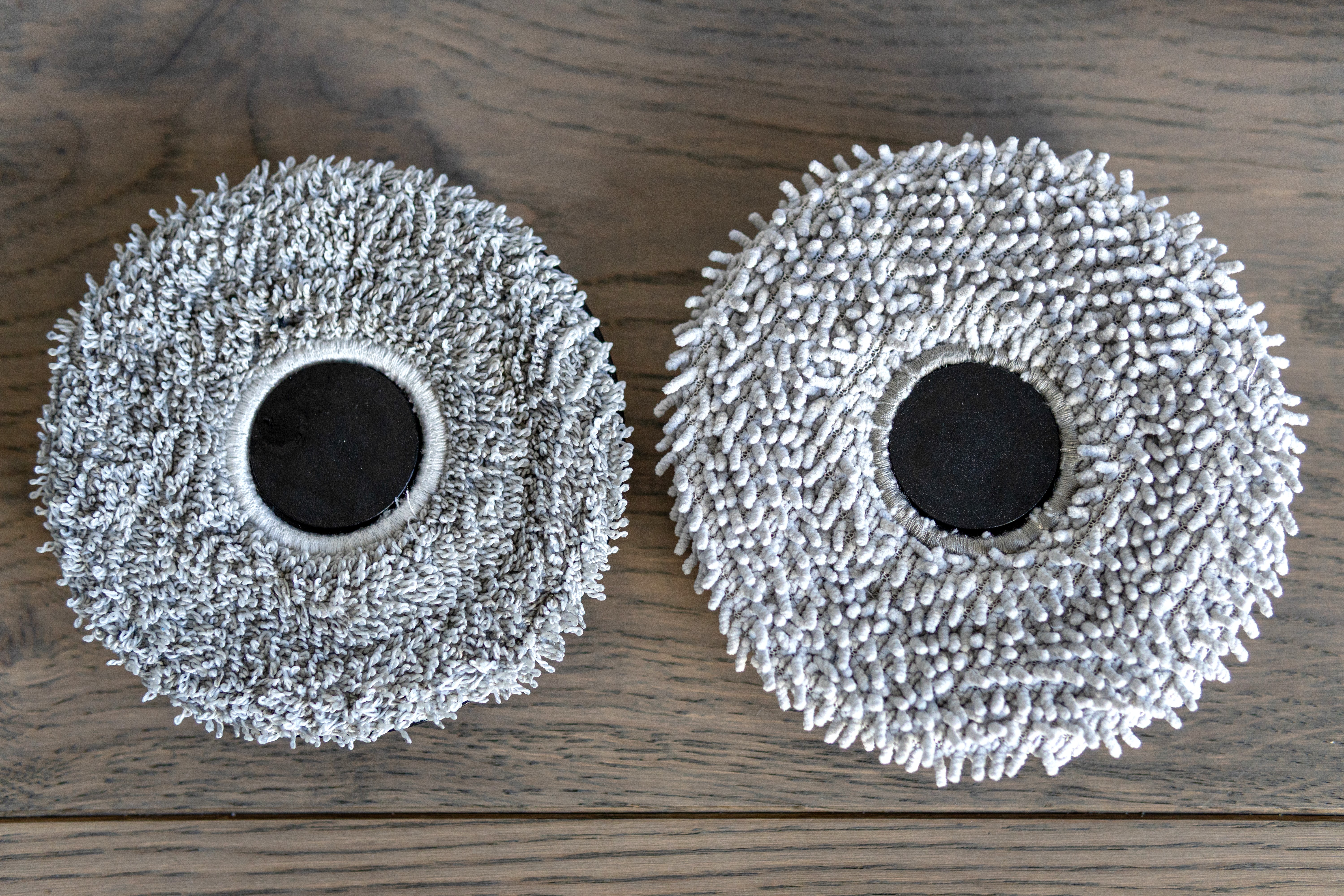
An interesting aspect is that the robot has neither an optical camera for obstacle recognition nor AI obstacle recognition, so even if it "sees trouble" (to be fair, it can't see it...), it cannot properly assess it or return to finish the job and get a proper result. The rice remains "processed" by the side brush, but not necessarily vacuumed, the same with the yogurt stain. Perhaps the absence of these aspects makes it a robot under 300 euros.
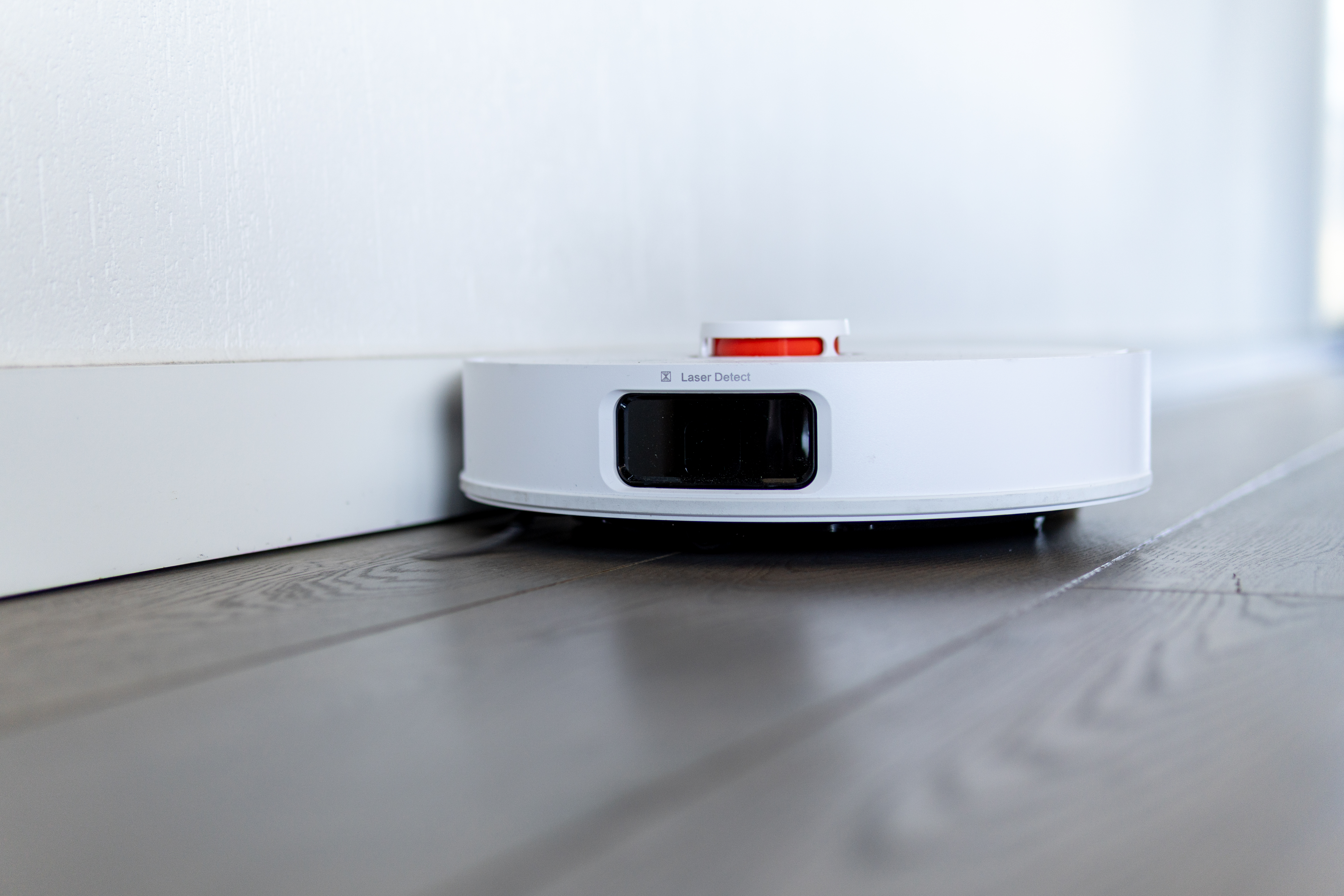
In summary, it's very good for everyday dirt, but for larger debris like rice, you need a higher suction speed and multiple passes, or a change in movement style. This behavior is typical of most robot vacuums without more advanced sensors and AI - a compromise that is justified in the ~300 € price segment.
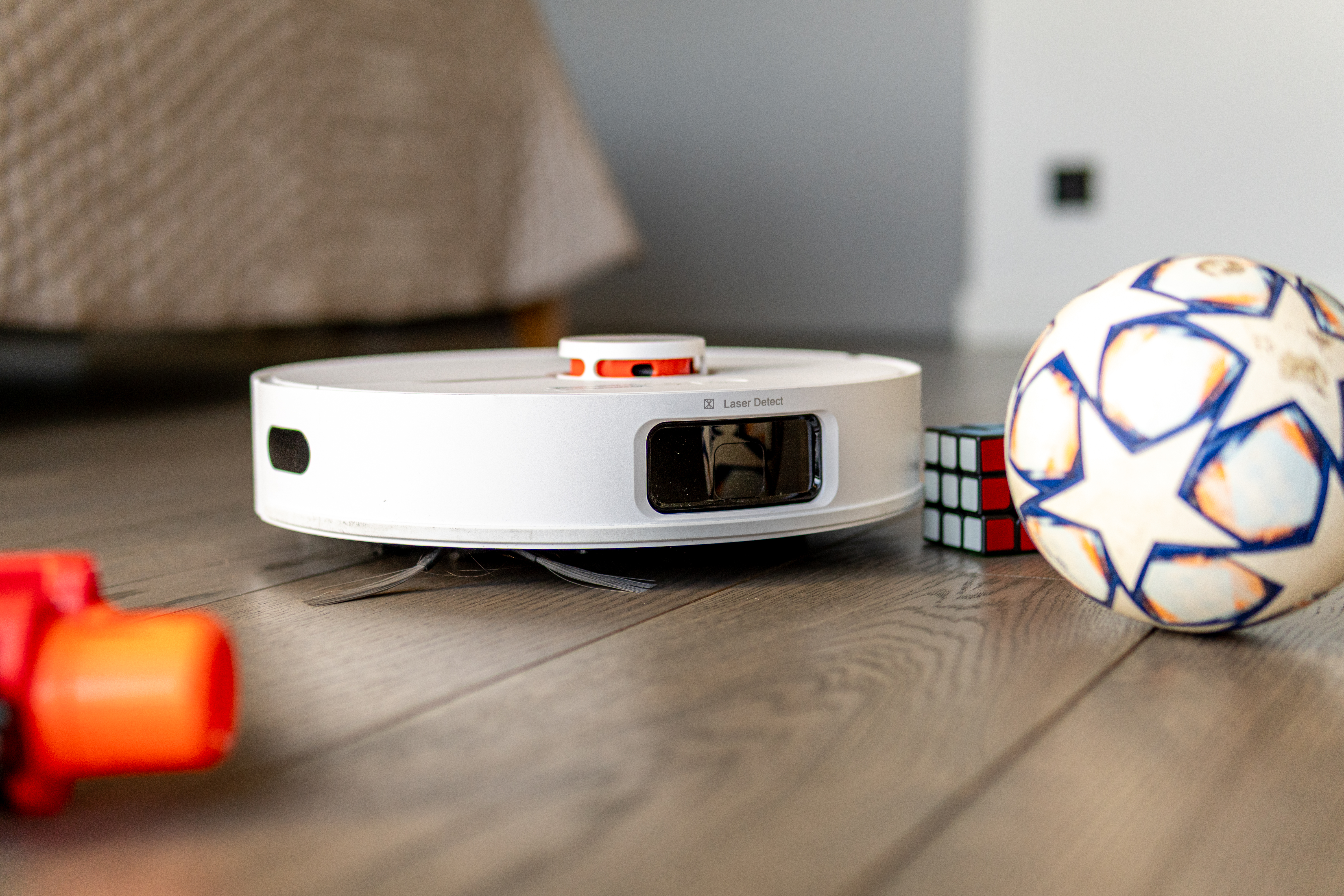
Performance
The robot's operating time from full charge to empty obviously depends on the type of floor or carpet, suction power, the intensity of the mop's rinsing, and, of course, the furnishings in the home.

My house has a 104 m² cleaning area. Jonr P20 Pro covers this area in 95 minutes with the most intensive suction mode and the mop rinsing every 5 minutes. It returns to the station once to charge - by then it has cleaned an area of 85 m². According to the specifications, the battery should last 160 min when vacuuming/washing, and 230 min when vacuuming only. This is probably measured with the weakest suction speed and the least frequent mop rinsing.

It is worth mentioning the capacity of clean water in the station - during the entire area washing and rinsing of the cloths, about 80% of water is consumed. Average humidity and average movement style were used. In total, this is half as much as the manufacturer declares.
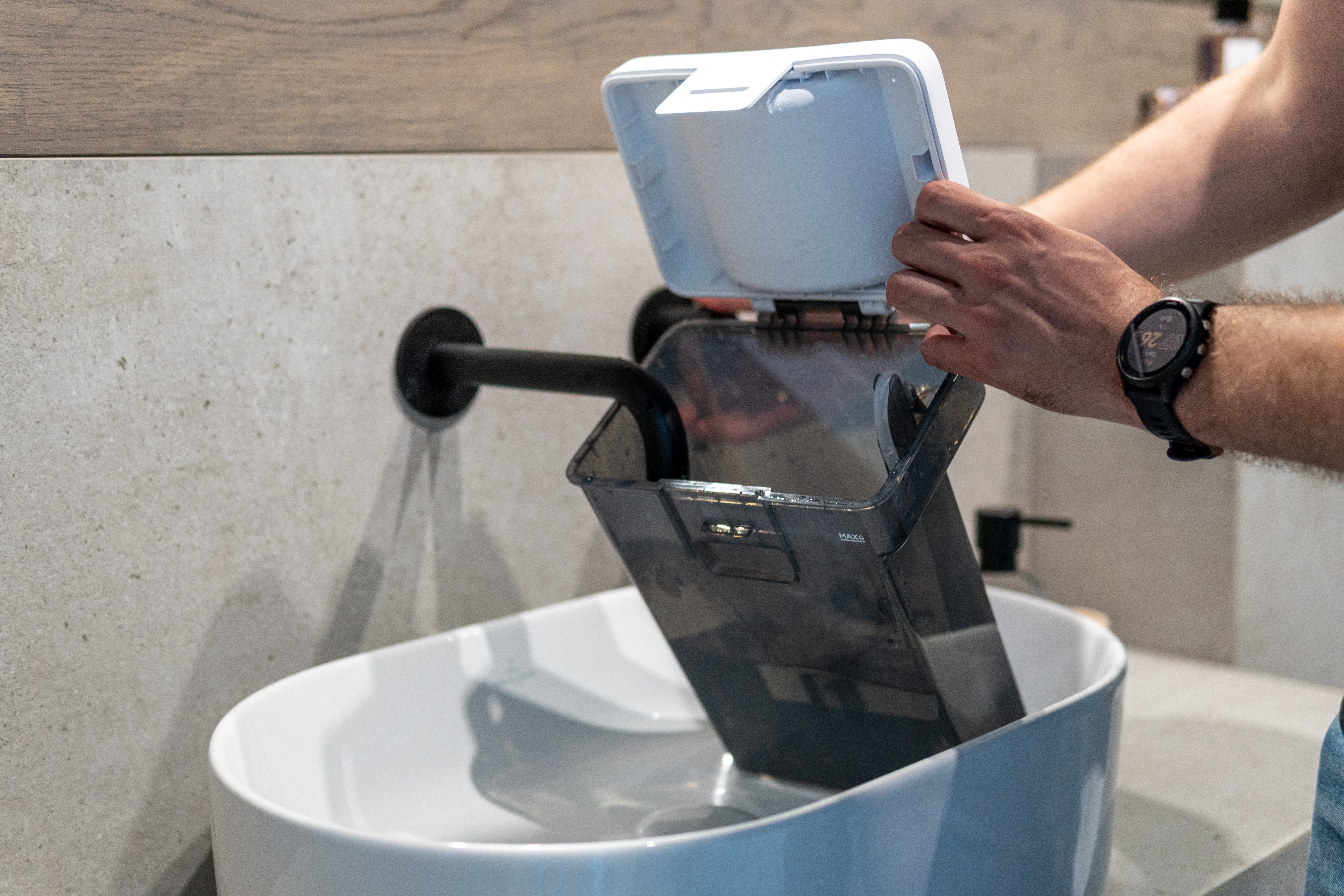
Comparison with Xiaomi X20 Plus
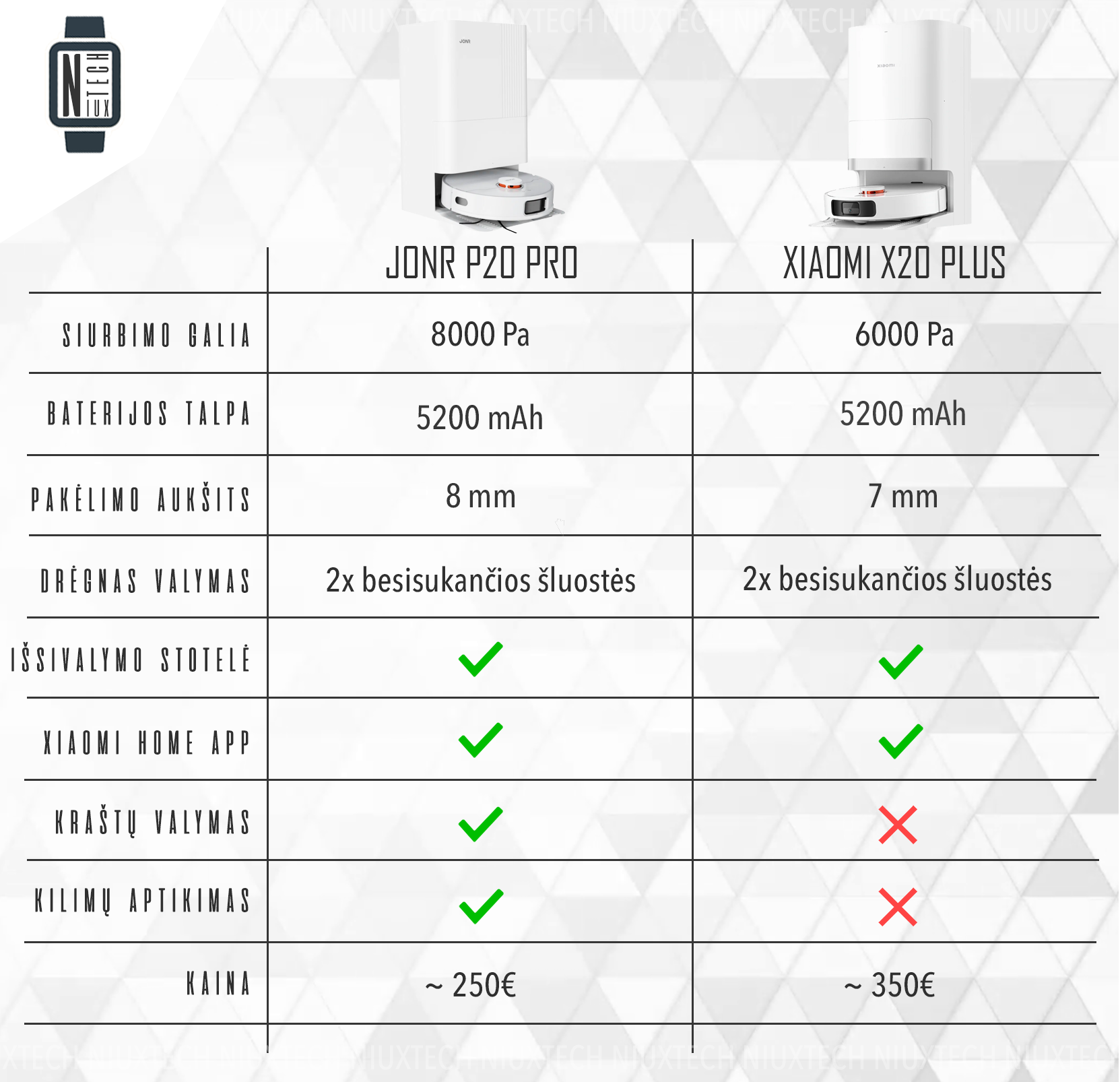
Summary and conclusions
The Jonr P20 Pro looks like a serious player in the robot vacuum market, offering some premium features while staying in the budget price segment. Integration into the Xiaomi Home ecosystem, quick mapping, a smart station with mop washing and drying, and an innovative protruding mop are big advantages.
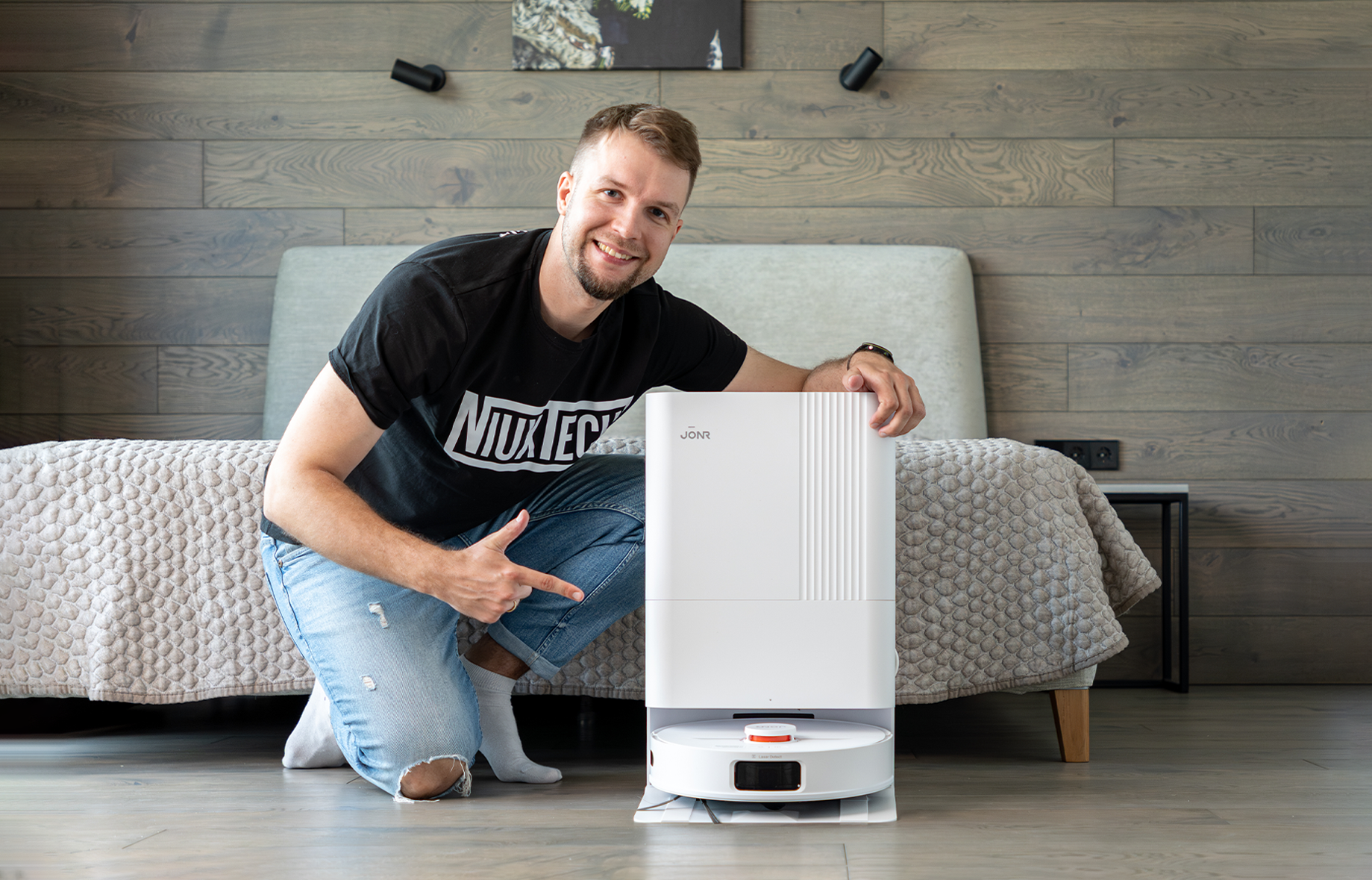
Although the obstacle recognition system is quite poor and there are some nuances with navigation, the overall experience is very good. This robot really makes everyday housework easier and gives you more free time. And adding that it doesn't cost €300 - I don't know what could be better at the moment!

